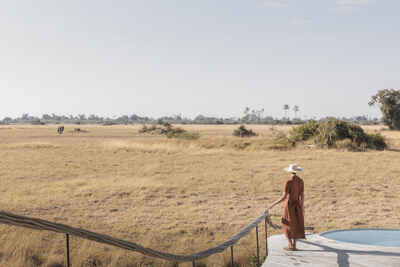About Little Mombo
Little Mombo Camp overlooks a grassy floodplain dotted with tree islands in the north of Botswana's Moremi ...
... Game Reserve, within the Okavango Delta. It is set within a private concession, in an area renowned for having Botswana's highest density of wildlife – making Little Mombo a real 'flagship' safari camp for Botswana.
Little Mombo is a superbly run safari camp staffed by a very professional team including some excellent guides. It's an exceedingly comfortable camp in a beautiful spot that is teeming with game, and is one of the few places in northern Botswana where you might glimpse rhino. However, with a price tag to match its reputation, it is also one of Botswana's most expensive camps, and being small it’s in high demand, so is always worth booking well in advance.
Our view
Little Mombo is a superbly run safari camp staffed by a very professional team including some excellent guides. It's an exceedingly comfortable camp in a beautiful spot that is teeming with game, and is one of the few places in northern Botswana where you might glimpse rhino. However, with a price tag to match its reputation, it is also one of Botswana's most expensive camps, and being small it’s in high demand, so is always worth booking well in advance.
Accommodation
3 tented suites
Children
Best for 8+
Open
All year
Activities

4WD Safari

Birdwatching

Guided walking safari

Helicopter

Private activities
Traveller reviews of Little Mombo
6 real, un-edited reviews from Expert Africa's travellers.
Arrived 5 May 2018, 3 nights
"Amazing camp and safari"
Overall rating: Excellent
Arrived 18 Dec 2017, 3 nights
"Excellent Stay at Little Mombo"
Overall rating: Excellent
Arrived 3 Oct 2015, 3 nights
"wild life paradise at Little Mombo"
Overall rating: Excellent
Arrived 19 Oct 2013, 2 nights
"Little Mombo review"
Overall rating: Excellent
Arrived 3 Aug 2013, 2 nights
"Little Mombo review"
Overall rating: Excellent
Arrived 12 Oct 2010, 2 nights
"Little Mombo review"
Overall rating: Good
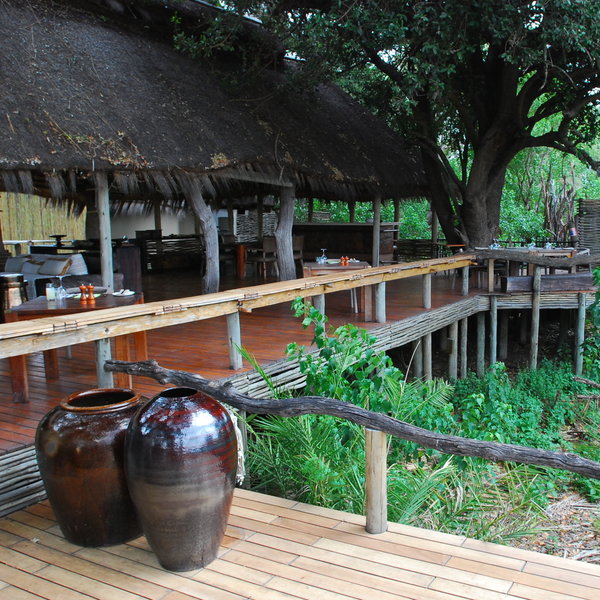
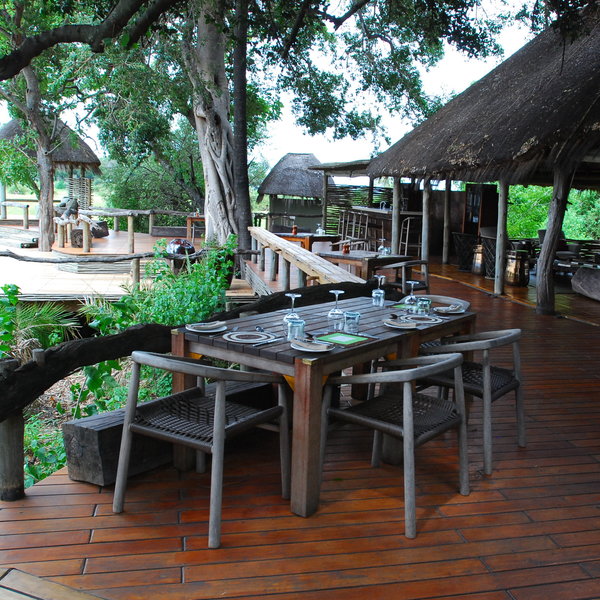
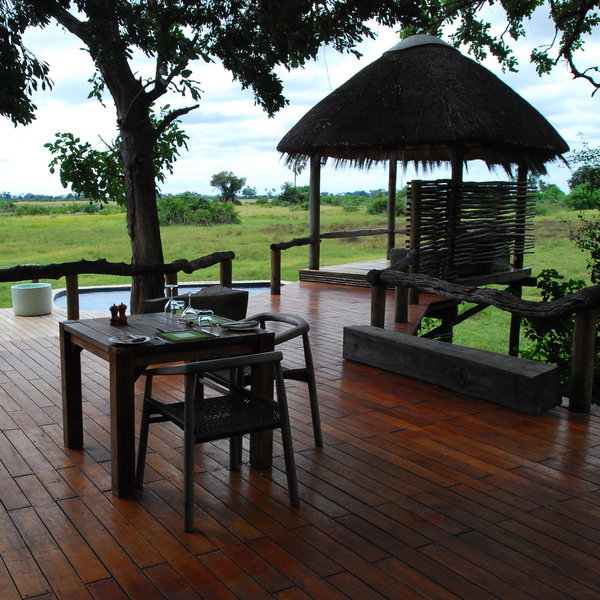
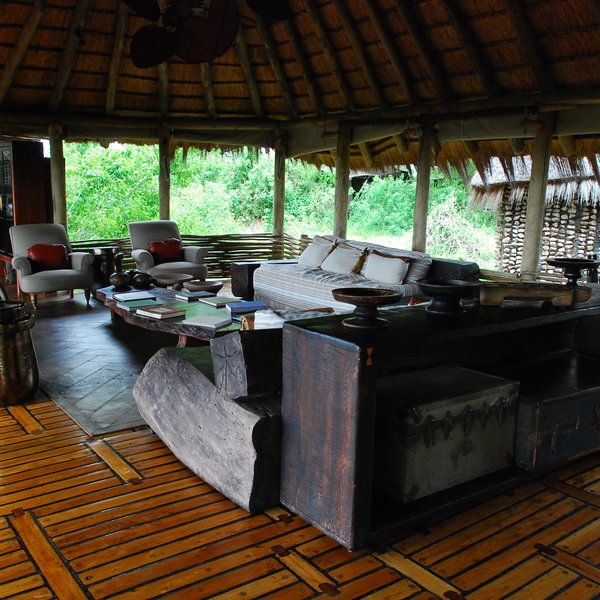
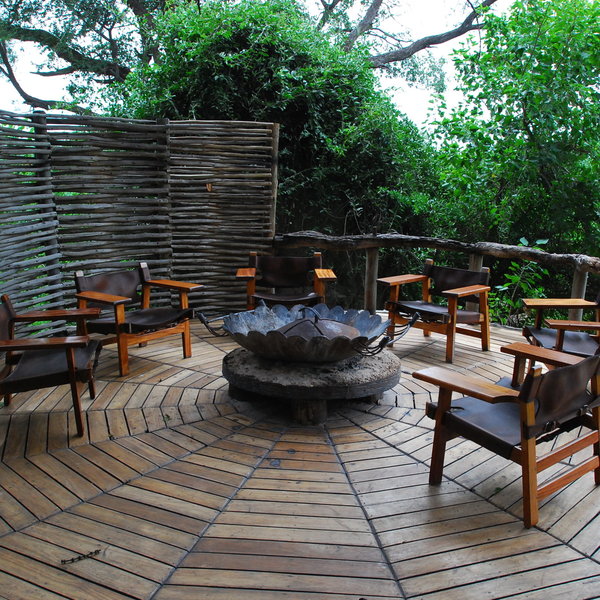
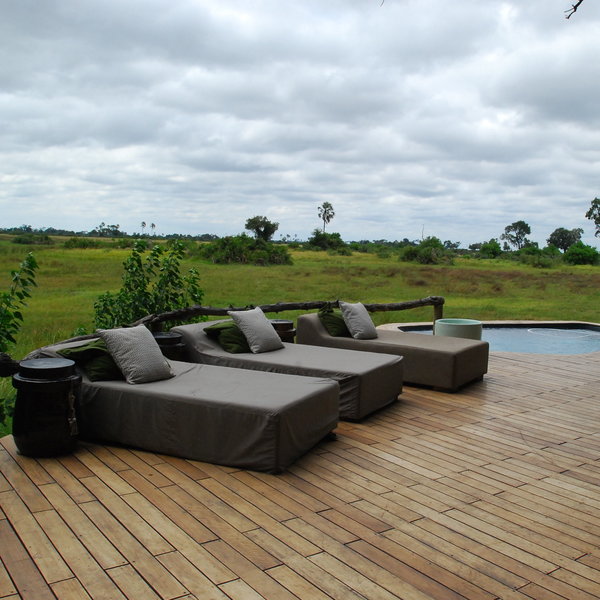
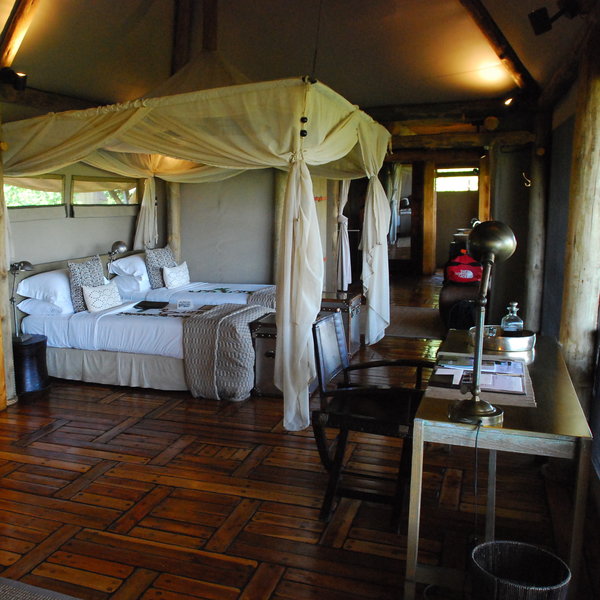
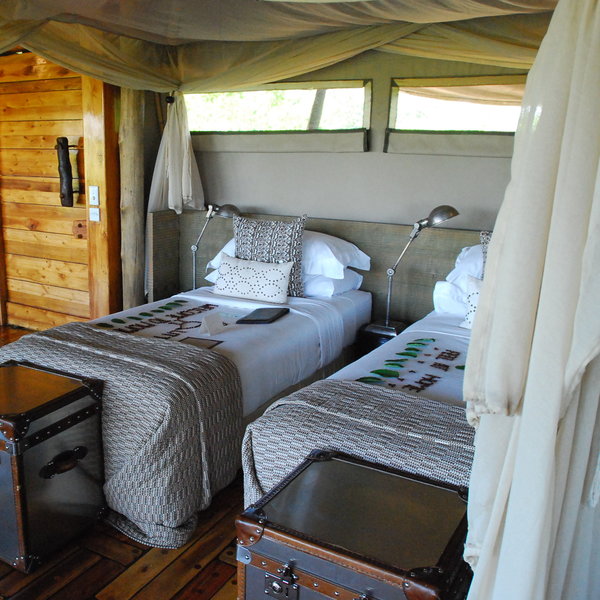
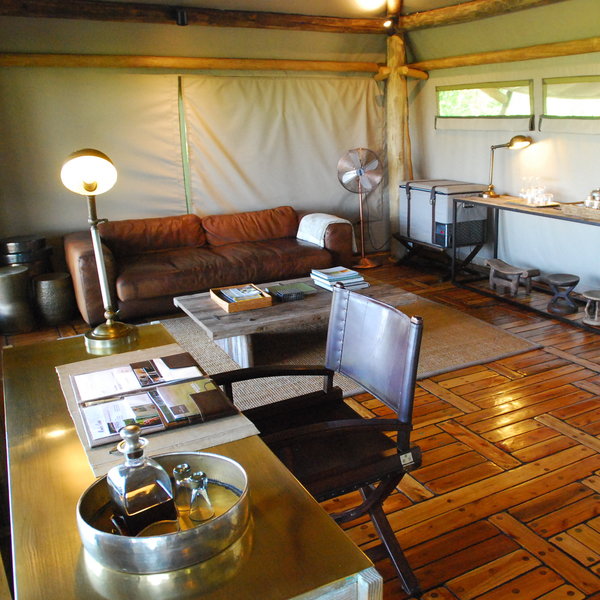
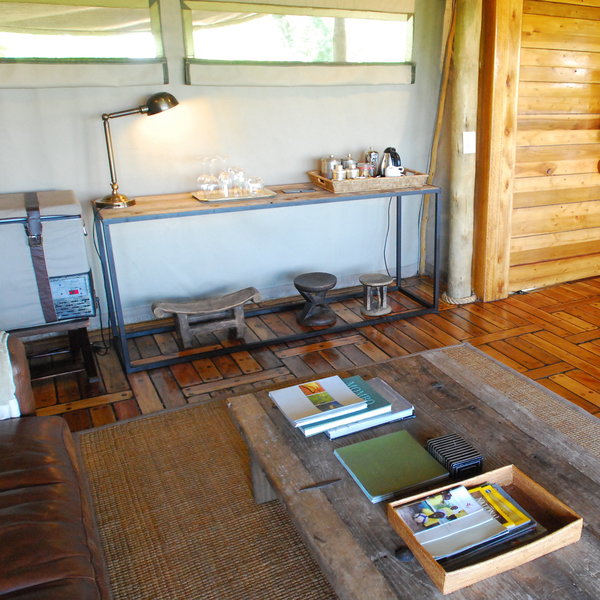
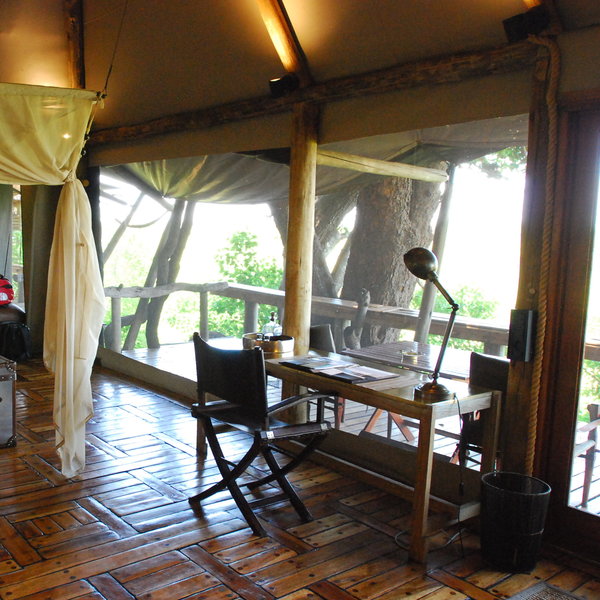
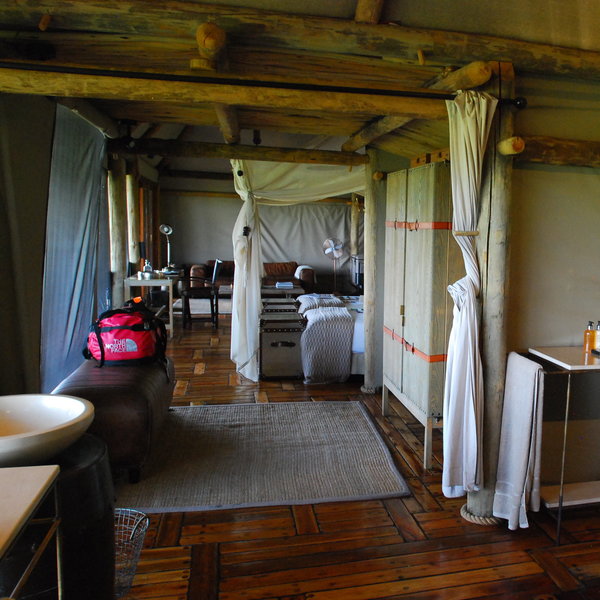
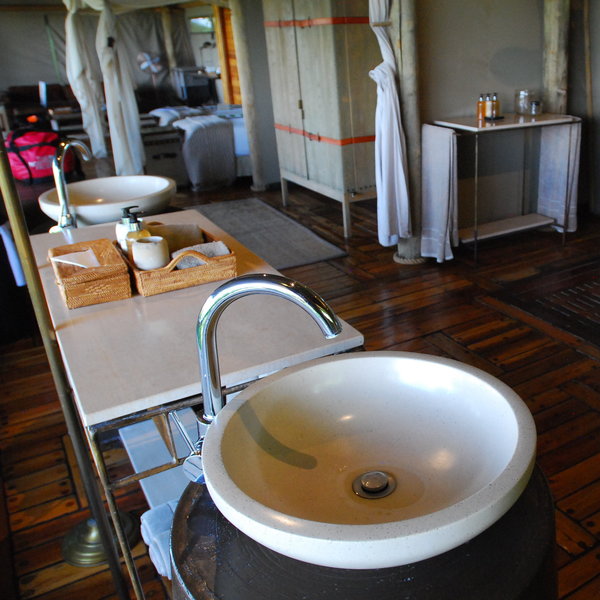
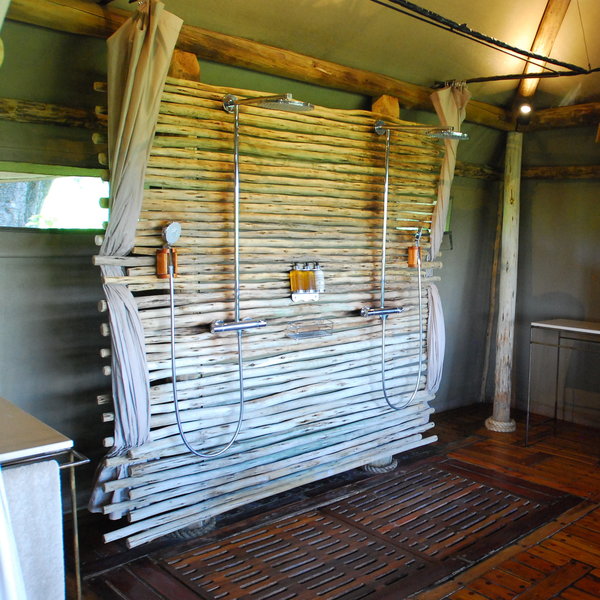
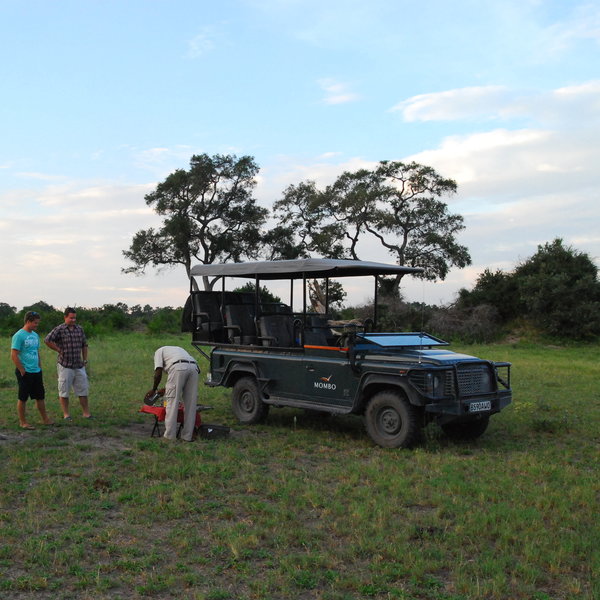
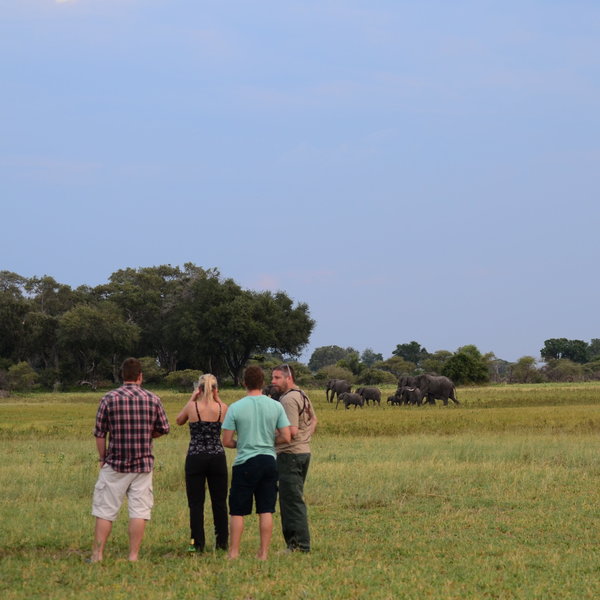
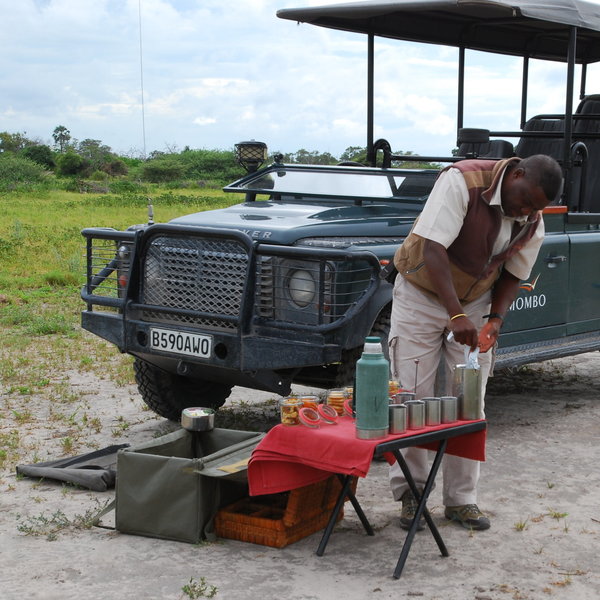
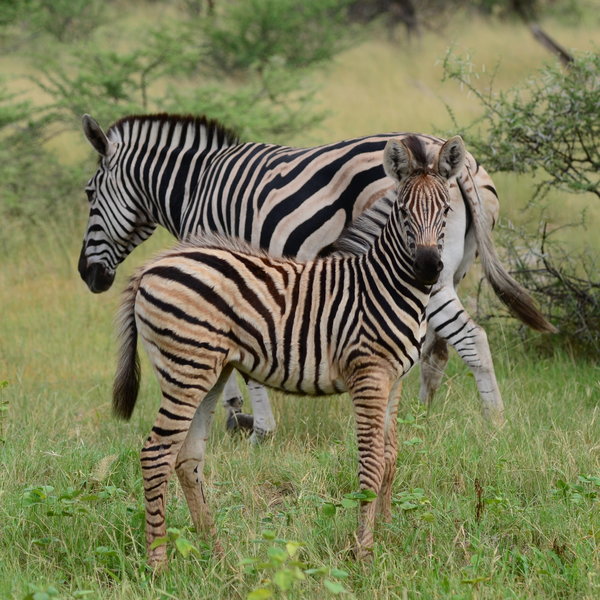
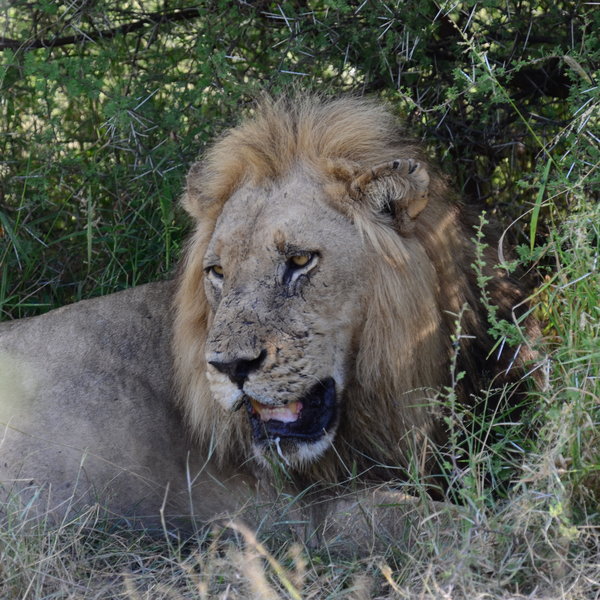
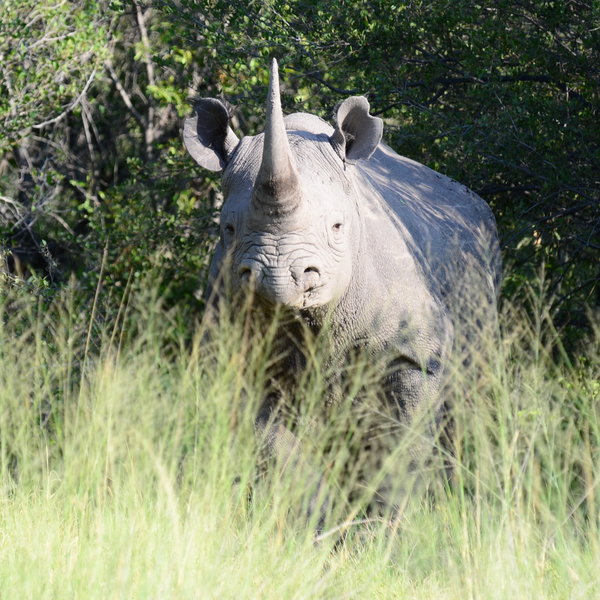
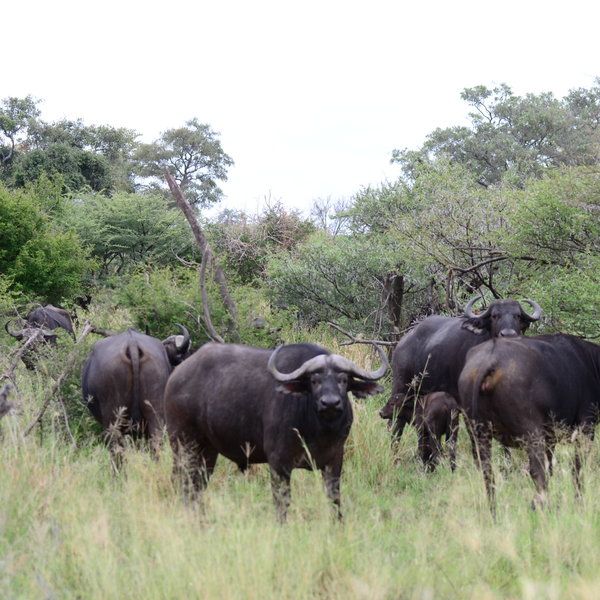
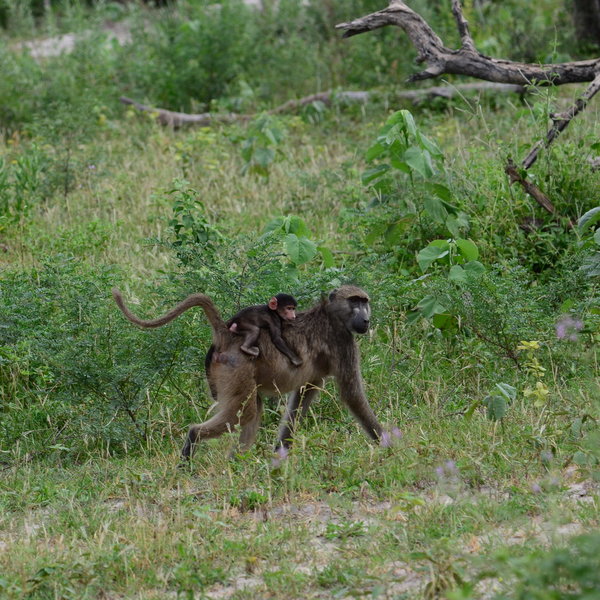
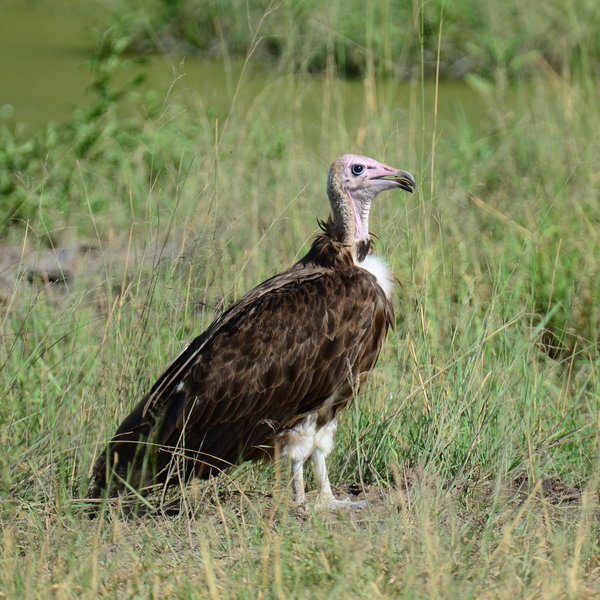
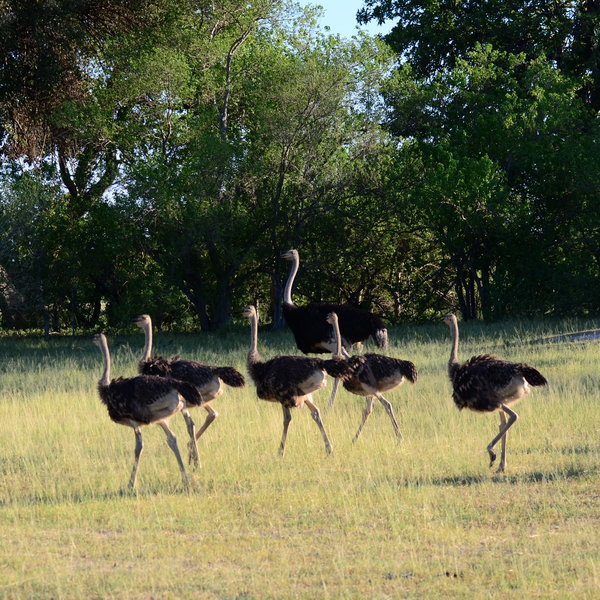
Expert Africa's gallery
When we travel we take lots of photos ourselves to give you a real and un-edited view of the safaris. See our 33 pictures of Little Mombo to get the candid view.
View galleryLittle Mombo: Our full report
Little Mombo Camp overlooks a grassy floodplain dotted with tree islands in the north of Botswana's Moremi ...
... Game Reserve, within the Okavango Delta. It is set within a private concession, in an area renowned for having Botswana's highest density of wildlife – making Little Mombo a real 'flagship' safari camp for Botswana.
Little Mombo is the smaller sister camp of the adjacent Mombo Camp, and is linked to it by a long, undulating, wooden walkway. Guests can walk alone between the two during the day but must be escorted at night due to the high game levels. The camps are essentially very similar, except Mombo has nine rooms and Little Mombo just three.
Little Mombo is raised on wooden decks, sometimes 4–5m high and with great views over the plains. When we arrived in April 2013, we were able to see elephant from the main deck – plus a variety of plains game.
There's no denying that Little Mombo is a spectacular camp. High wooden walkways lead through indigenous trees to three luxurious tented suites, giving Little Mombo a slight 'treehouse' feel. Often guests can spot game beneath the walkways; when we last visited a buffalo enjoyed some grass beneath my tent while I used the outside shower! The suites are widely spaced and feel very private, each with a section of walkway leading to its carved wooden door.
The view is the first thing that you will notice – enhanced by a long deck along the front of each suite that also houses a ‘sala’ – a thatched lounging area overlooking the plains. Inside the suites, each large, comfortable bed shares this uninterrupted view, aided by wooden doors with mosquito netting that fold right back, letting a refreshing breeze into the room.
The bed is low, made up with big fluffy pillows and decorated with neutral-coloured cushions with simple swirling designs. There’s a walk-in mosquito net and bedside tables with individually crafted reading lamps. The centre of each suite features a large sofa and footstool, and a dark wooden polished chest of drawers with enough plug points to charge a good range of batteries. A selection of wildlife and birding magazines sits on the desk, alongside a silver tray set with filtered and bottled water and glasses, and sparkling decanters of sherry and port
A walk-through area leading to the enormous bathroom houses an ottoman couch and a wardrobe, this last designed to look like an old travel truck turned on its side. Here you’ll find an electronic safe, tissues, insect repellent and bug spray. The bathroom itself, which can be curtained off from the bedroom, boasts a double shower, plenty of storage space, a full-length mirror and a washstand set with two curving pottery bowls overlooking the plains. Sharing the view are a separate toilet, and an open-air shower with curving canvas walls on three sides, an oversized shower rose, and hot and cold running water. Completing the set up is a good selection of complimentary toiletries, and a big bale of soft brown and white fluffy towels.
The decked main area has both dining and seating areas, which are thoughtfully and authentically decorated with big comfortable sofas, cushions and an array of tribal and local arts and crafts. There is also a well-stocked bar.
To one side is the firepit where guests can take drinks before dinner and where afternoon tea is often served. Beyond this, steps lead down to a boma area, which plays host to a traditional meal each week.
Little Mombo has a small plunge pool, surrounded by decking and with a few sunloungers, while further comfort comes in the form of a shaded 'sala', with a large daybed and plenty of cushions. This, too, has a good view of the surrounding plains.
As Little Mombo is within the Moremi Game Reserve, activities are limited by national parks’ regulations to only daytime 4WD game drives. However, the game in Moremi is very prolific (and also seems relaxed and well used to cameras), the guiding is excellent, and the area is exceptionally private, so you are unlikely to see other visitors. Although we weren’t lucky enough to see one of the white and black rhino that have been reintroduced here in recent years, we did see lion, elephant, buffalo and a good variety of plains game.
Activities
4WD Safari
Birdwatching
Guided walking safari
Helicopter
Private activities
Families & children
- Attitude towards children
- Children over the age of six are welcome at Little Mombo.
- Property’s age restrictions
- Children of 6 years and older and above are accepted, although families with children aged 6–12 are asked to take a private vehicle at extra cost.
Children between six and 16 years must share a suite with an adult/s. - Special activities & services
- None
- Equipment
- None
- Generally recommended for children
- Mombo’s quite an adult camp, and the need to pay for a private vehicle will deter many. If the cost of this isn’t a problem, then slightly older children who are keen on wildlife will enjoy it here. They will be sensible enough to take care on the walkways, and they’ll find the rooms spacious enough to enjoy
- Notes
- Little Mombo is a very open camp with dangerous wildlife frequently wandering through. The suites and walkways are raised on stilts and are not suitable for very small children.
Food & drink
- Usual board basis
- Full Board & Activities
- Food quality
- When last we stayed at Little Mombo, the food was excellent and varied.
For breakfast, before our morning activity, there was a selection of cereals, fruit salad, toast and a fresh pot of tea or coffee.
Our one brunch during our stay was taken in the main bar area – and to our amazement we were served a delicious calamari (with a further option of sticky chicken) with a good selection of salads and piping hot fresh bread.
The afternoon teas before the drives were just as good – banana smoothies, cheese scones and an enormous chocolate cake were on offer, along with tea (from green to peppermint) and coffee, fruit juice and freshly made lemonade.
We were taken over to the main Mombo Camp for a traditional dlodgeer, which is offered to guests on a weekly basis. This consisted of the traditional nshima (mealie-pap) with a good selection of either chicken, pork, lamb or beef relishes, traditional vegetables such as pumpkin leaves with groundnut sauce, and a range of salads. For the slightly less adventurous, a barbecue was also serving chicken and beef kebabs and steaks. - Dining style
- Group Meals
- Dining locations
- Indoor and Outdoor Dining
- Further dining info, including room service
- Not available
- Drinks included
- Soft drinks, bottled water, spirits, local beers and a selection of (generally) South African wines are included. Imported wines and spirits and champagne cost extra – and may even need to be requested in advance
Our travellers’ wildlife sightings from Little Mombo
Since mid-2018, many of our travellers who stayed at Little Mombo have kindly recorded their wildlife sightings and shared them with us. The results are below. Click an animal to see more, and here to see more on our methodology.

100% success

100% success

100% success

100% success

100% success

100% success

100% success

100% success

50% success

50% success

0% success

0% success

0% success

0% success

0% success
Getting there
- Location
- Moremi Game Reserve, Botswana
- Ideal length of stay
- 2–3 nights at a minimum, although it'd be very easy to spend longer here, as the game viewing is excellent and it’s a luxurious camp.
- Directions
- The lodge has an airstrip 20 minutes drive away, and from there it's a half-hour flight to Maun.
- Accessible by
- Fly-and-Transfer
Special interests
- Honeymoons
- For excellent game viewing, attentive service and an exclusive safari, Little Mombo is perhaps the ultimate location for a Botswana honeymoon. Ideal for a romantic escape, its three luxurious tented suites are set far apart and feel very private.
- See ideas for Honeymoons in Botswana
- Birdwatching safaris
- Mombo is a birder's paradise. Chief’s Island has dry-country birds, whilst surrounding waterways are home to fish eagles and a variety of kingfishers, waders, darters, egrets, herons. If you are lucky you may catch a glimpse of a Pel's fishing owl!
- See ideas for Birdwatching safaris in Botswana
- Wildlife safaris
- The Mombo area of Moremi is probably the best place for wildlife safaris in Botswana. It has excellent populations of the big predators, herds of buffalo and elephant, both white and black rhino, spotted hyena, and a very wide range of plains game.
- See ideas for Wildlife safaris in Botswana
- Luxury safaris
- Offering some of the best game viewing in Botswana, Little Mombo provides professional, attentive service and some superb guiding. The luxurious suites are eminently comfortable and spacious. In high demand, you’ll need to book early to include this camp on your luxury safari.
- See ideas for Luxury safaris in Botswana
Sustainability
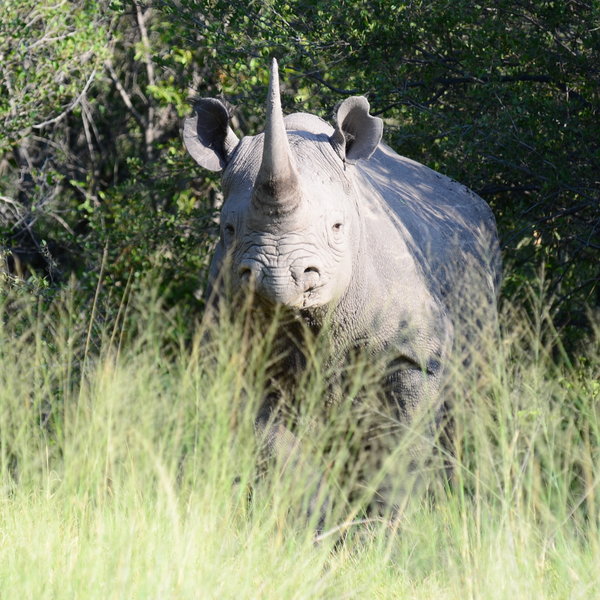
Rhino Reintroduction Project
A simple throwback to the 1990s shows the negative impacts of poaching in Botswana: fewer than 19 white rhinos were still present in the wild and black rhinos were already classified as ‘locally extinct’. A year later, there were no wild rhinos left in the local area. In pursuing the local reintroduction of rhino species, Wilderness Safaris initiated an exciting collaboration with the Botswana Government in the early 2000s. Efforts involved the translocation and release of populations of both white and black rhinos into the Okavango Delta World Heritage Site, in areas carefully chosen for habitat suitability and higher security.
Located in the heart of the Moremi Game Reserve which is widely-known for its unique ecosystem, Little Mombo Camp plays an important role in the Botswana Rhino Reintroduction Project. Donations made in the early stages of the project helped financing the purchase of the first three white rhinos and the construction of livestock enclosures traditionally known as ‘bomas’, or were used to cover transportation and monitoring costs. Appreciated by many guests, photography safaris can be organised in the Okavango Delta which provides plenty photographic subjects including the newly reintroduced rhinos as well as dramatic landscapes, herds of plain’s game and spectacular birdlife. During their stay, guests can learn more about the conservation project from on-site trained monitoring officers and sustainability coordinators.
Proving its success once again, the Botswana Rhino Conservation Programme has also won significant awards such as the ‘Natural Award’ in the Connoisseur Circle Hospitality Awards or the WTTC Tourism for Tomorrow Award in the Environment Category.
See more great sustainability projects in Botswana
Communications
- Communications
- For all intents and purposes you should consider yourself deep in a pristine wilderness environment and out of contact with the rest of the world. There is no cellphone reception. However, Little Mombo does now have Wi-Fi in the rooms. In emergencies it is also possible to receive and send messages via the camp’s office.
- TV & radio
- None
Health & safety
- Malarial protection recommended
- Yes
- Medical care
- All of the managers are first aid trained – the nearest doctor is in Maun which is a 30-minute flight away. The lodge also has radio communications with a nurse in Maun who can give advice. Please note that it is only possible to fly out of camp during daylight hours as the bush airstrips do not have any lighting at night.
- Dangerous animals
- High Risk
- Security measures
- There are unarmed nightwatchmen on guard, and guests are always walked back to their rooms at night. There is also a horn in each suite to summon attention in case of emergency.
- Fire safety
- There are fire extinguishers outside the suites and in the common areas.
Useful info
- Disabled access
- Not Possible
- Laundry facilities
- A complementary laundry service is included at Little Mombo. Clothes are collected in the morning and returned, washed and ironed, in the evening.
- Money
- There is an electronic safe in all the suites.
- Accepted payment on location
- Visa and MasterCard credit cards are accepted, as is cash in US dollars, UK sterling, euros and South African rand.
Plan and book your trip with Expert Africa
All of our trips are tailor-made, so we'll always adapt them to suit you. Talk to an Expert and let us plan and arrange your perfect trip.

Talk to an Expert
Call or email us now! We’ll match you with the Specialist in our team who is best suited to help you. Then together we can start planning your trip.

Set up your itinerary
Based on our experience and your ideas, your specialist will create a detailed, costed itinerary. We’ll refine it together, until we have a trip that you’re perfectly happy with.

Prepare for your trip
The same Specialist will make the seamless arrangements for your trip, send you detailed travel documents, and be available to answer any questions before you depart.

Travel with peace of mind
After you set off, you’ll be cared for by our partners in Africa, most of whom have worked with Expert Africa for decades. And if you ever need us urgently, we’re available 24/7.

When you return
We love to learn about your trip, and so will always be grateful if you’ve the time to give feedback to your Specialist when you return.
Little Mombo's location
Look closer at the environment and surroundings of Little Mombo.
Excursions from Little Mombo
Optional extra day-trips and excursions possible whilst you're staying at Little Mombo. Talk to us: these are usually best arranged before you go.
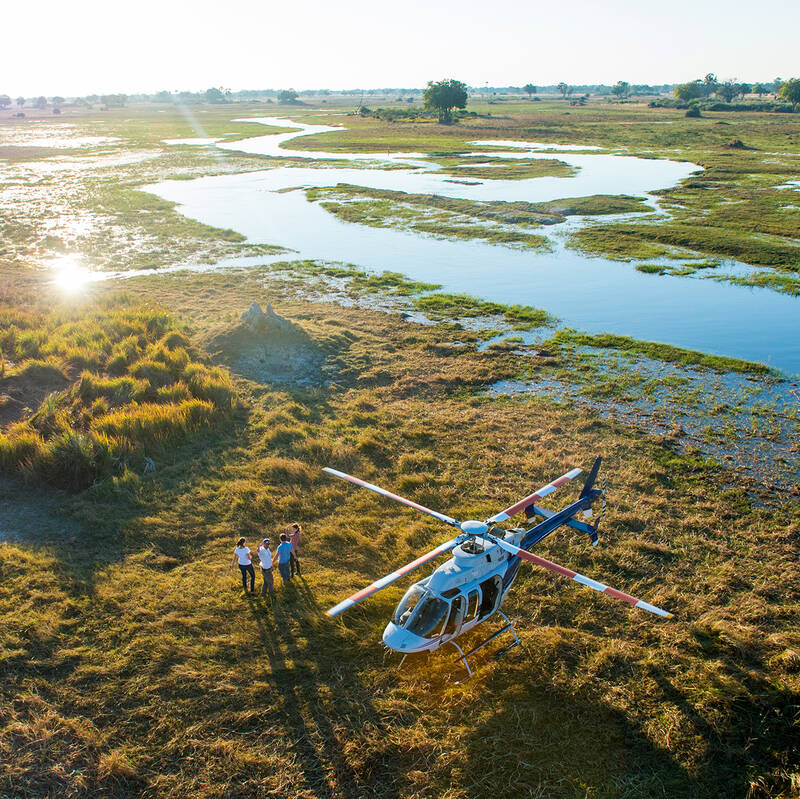
Helicopter Flight - Botswana
Various: from 30 minutes to half a day.
Low-flying, agile and offering superb views, helicopters are an ideal way to move around the Okavango Delta.You can use them instead of fixed-wing inter-lodge transfers or as an addition to other wildlife watching activities, and of course, helicopters can hover to allow that perfect pic, whereas fixed-wings can’t.
More about Helicopter FlightOther lodges in Moremi Game Reserve
Alternative places to stay in this same area.
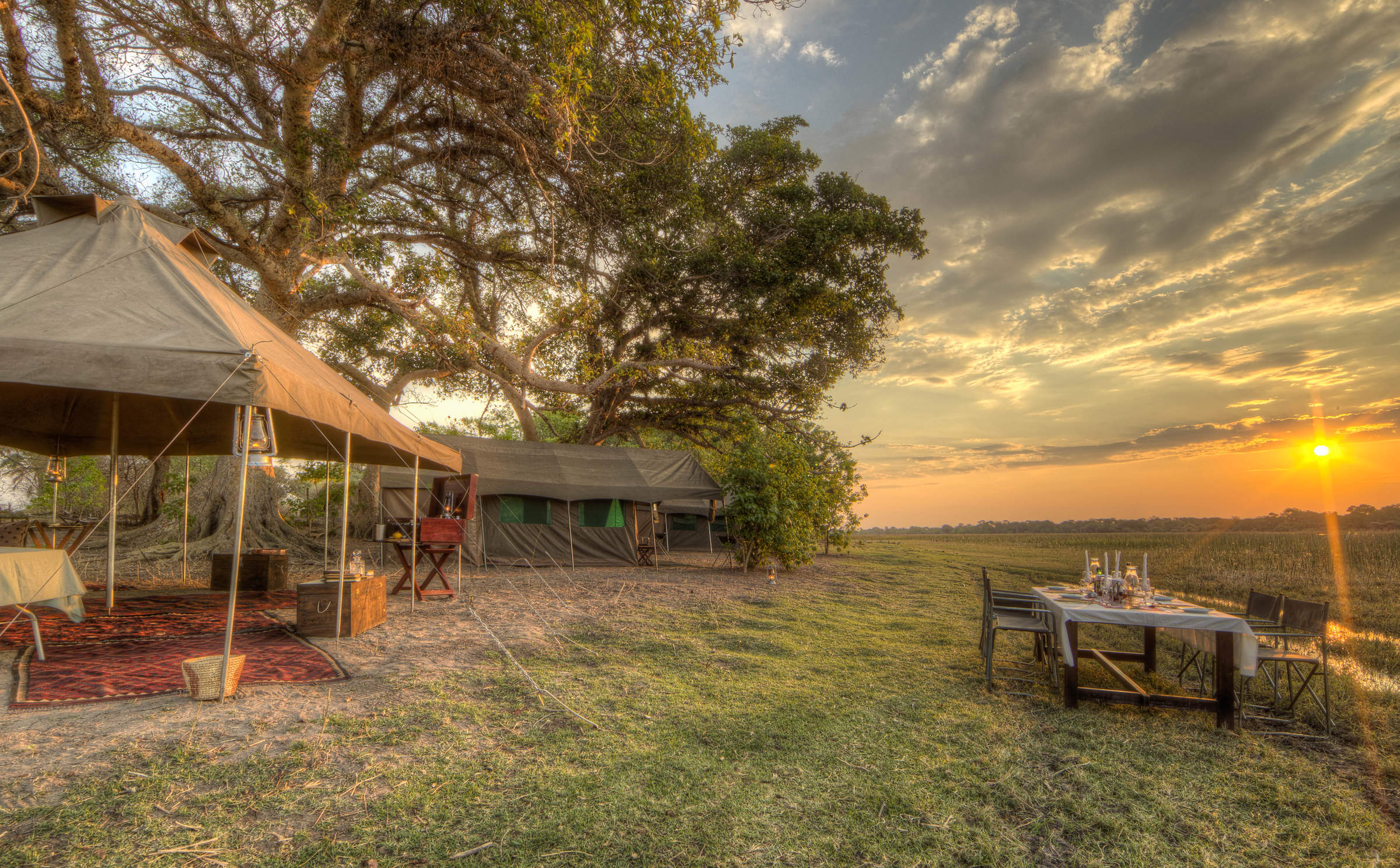
Private Mobile
The Botswana Private Mobile Safari has no fixed location; it's exclusive to your group and comes with a top professional guide. Expect comfortable camping, great food, and a superb wildlife experience wherever you decide to go.
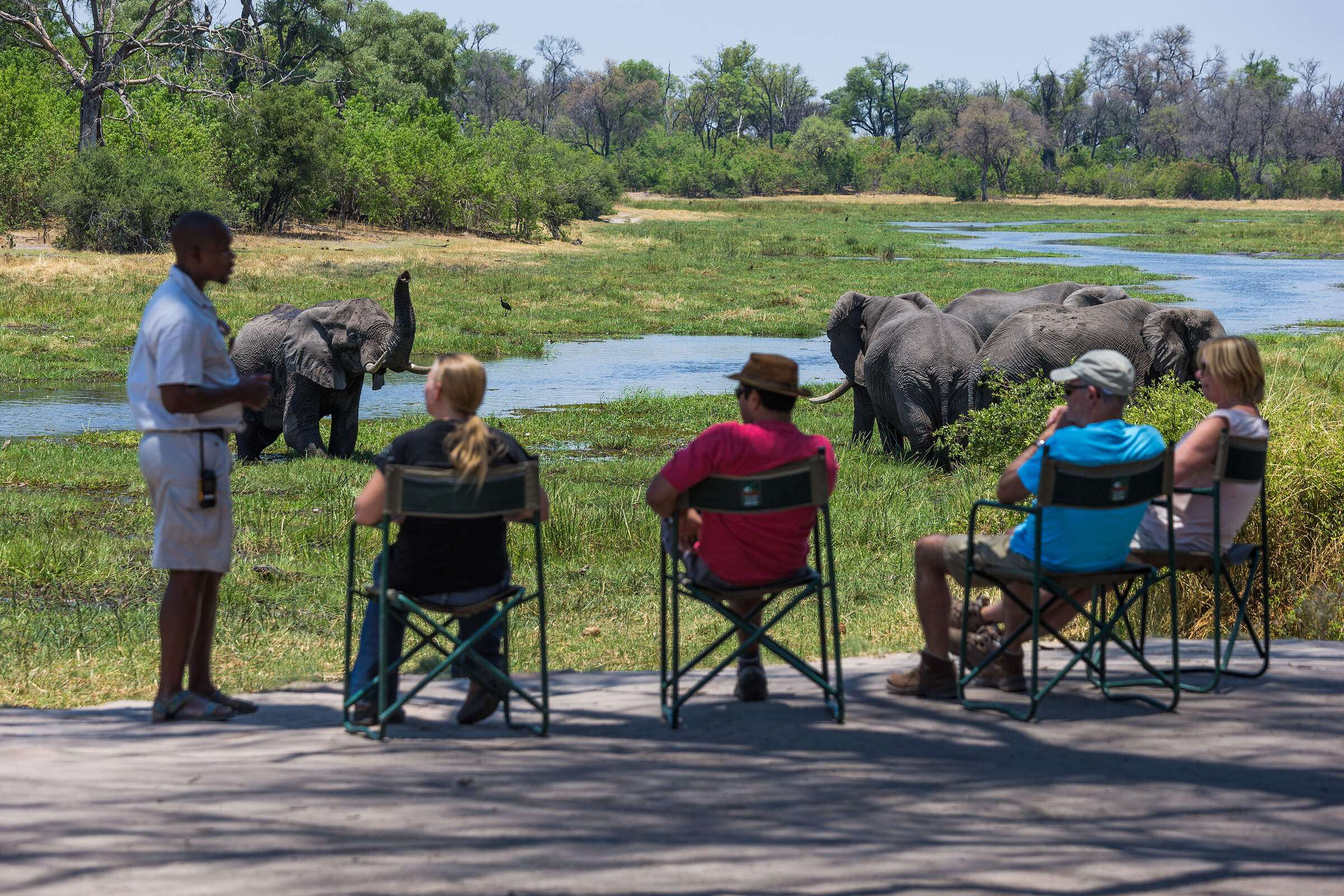
Machaba Camp
Overlooking the Khwai River to Moremi Game Reserve beyond, the classic Machaba Camp combines comfort with excellent game viewing.
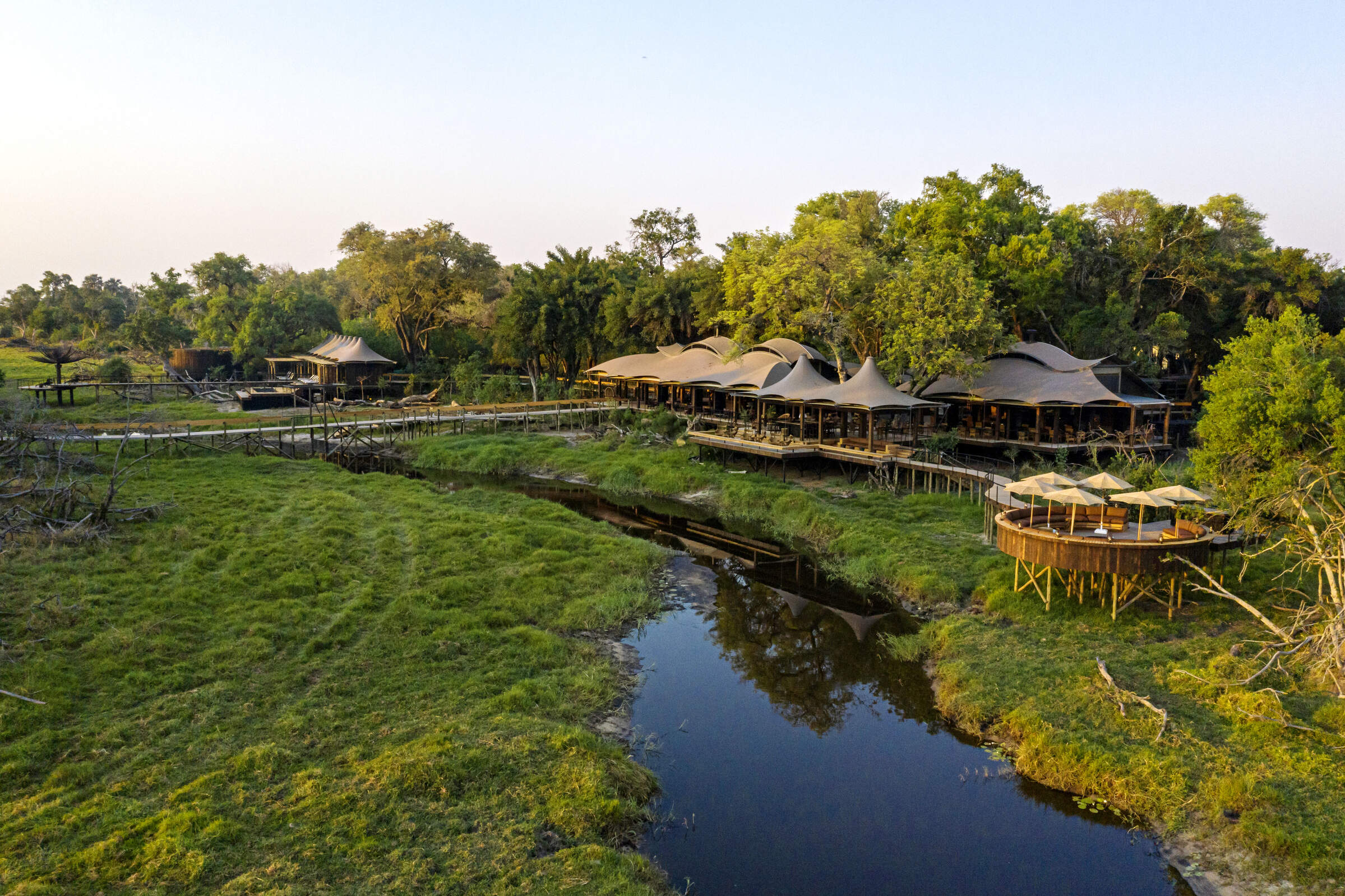
Xigera Safari Lodge
Located deep in Botswana's Okavango Delta, Xigera Camp normally focuses on mokoro excursions and motorboat trips, with 4WD game drives when water levels permit.
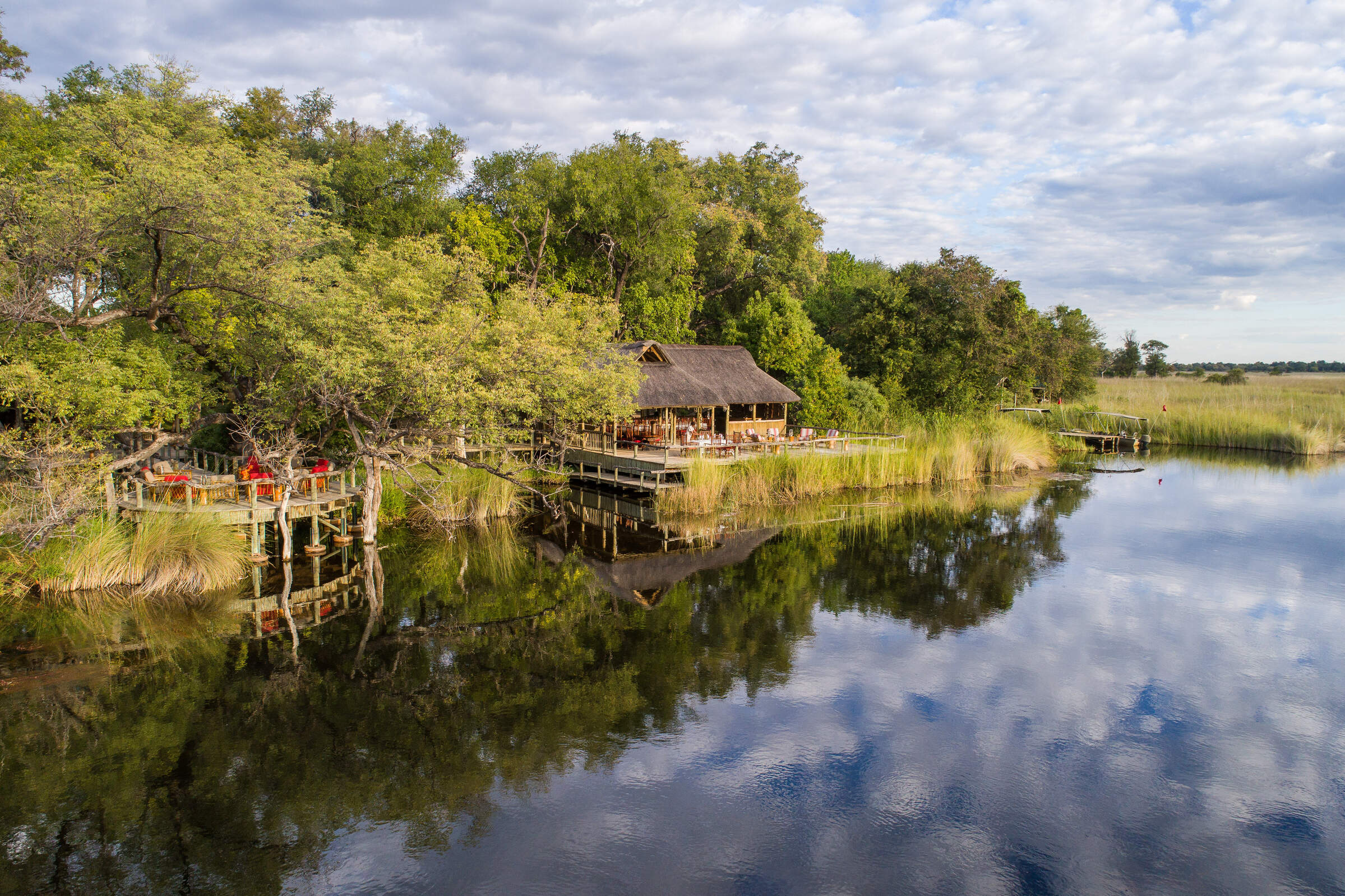
Xakanaxa
Camp Xakanaxa is a well-established traditional camp beside a huge lagoon within the Moremi Game Reserve, with access to some superb wildlife viewing.
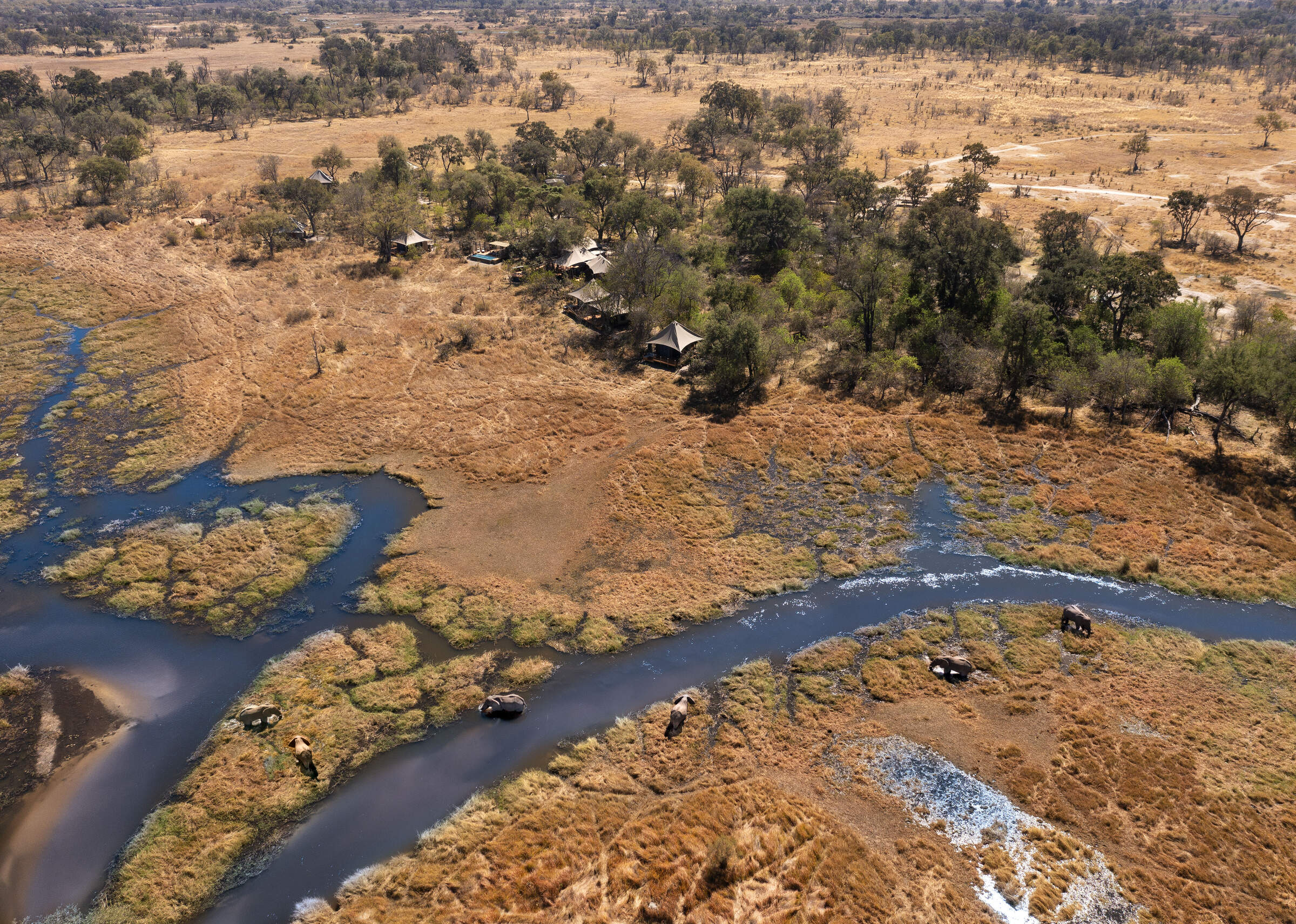
Khwai Lediba
Khwai Lediba offers a traditional African safari experience, with very comfortable tented accommodation, in a fantastic game area north of the Moremi Game Reserve.
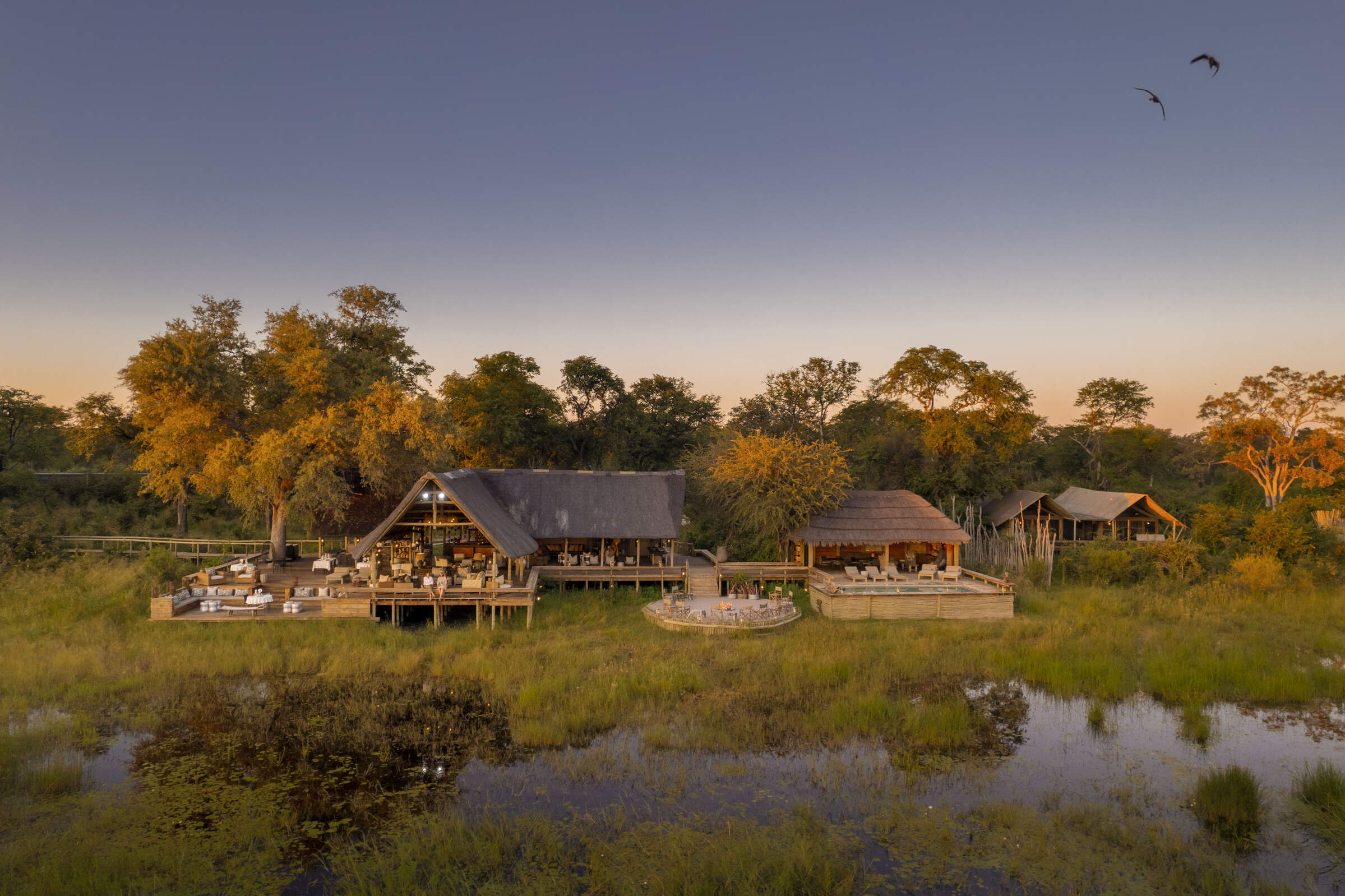
Sable Alley
Smart, independent and well-run, Sable Alley overlooks a beautiful, hippo-filled lagoon within the diverse Khwai Private Reserve.
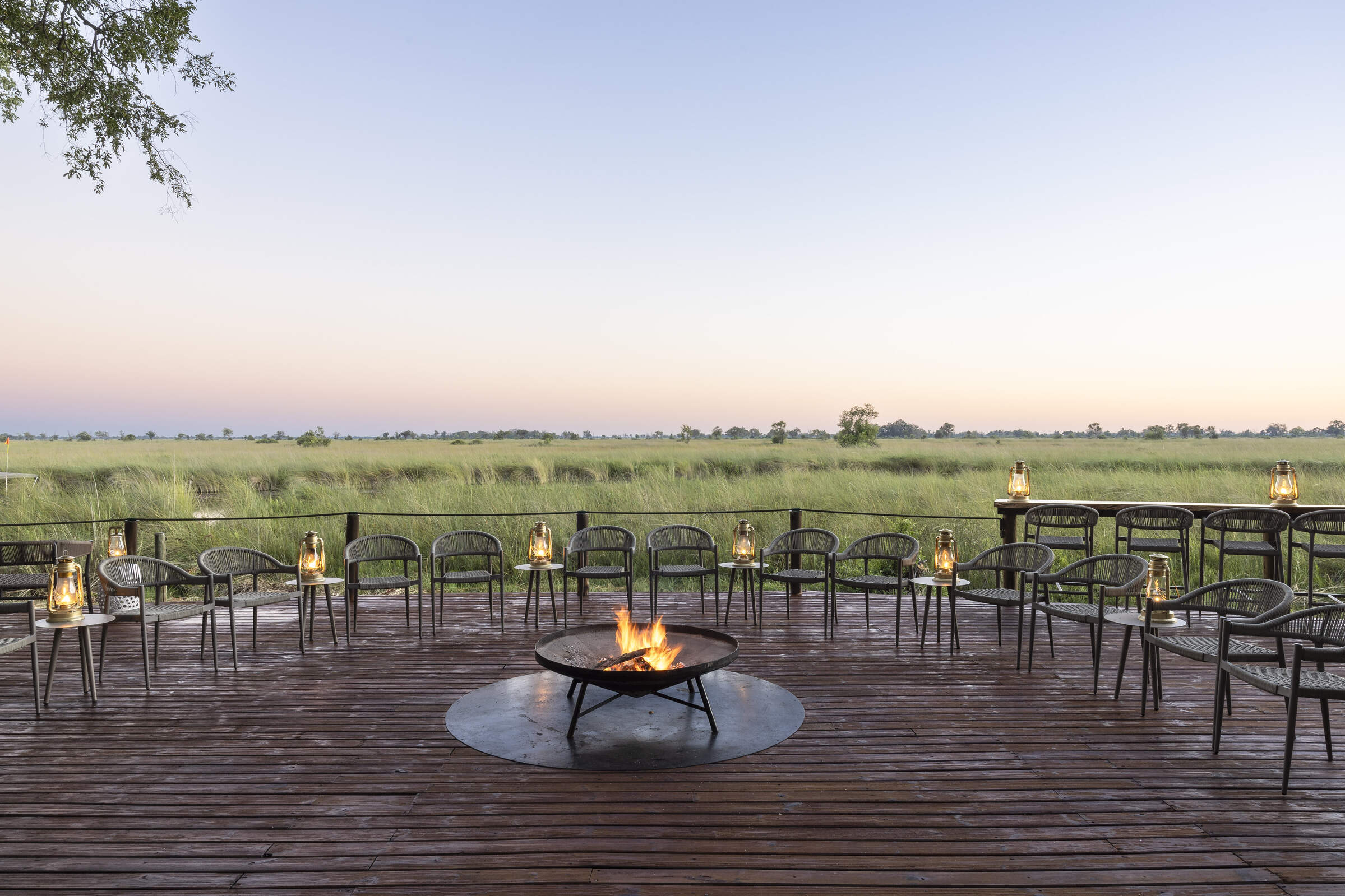
Okuti
With an innovative design and good service, Okuti Camp offers game drives and boat trips in a beautiful, game-rich part of Moremi Game Reserve.
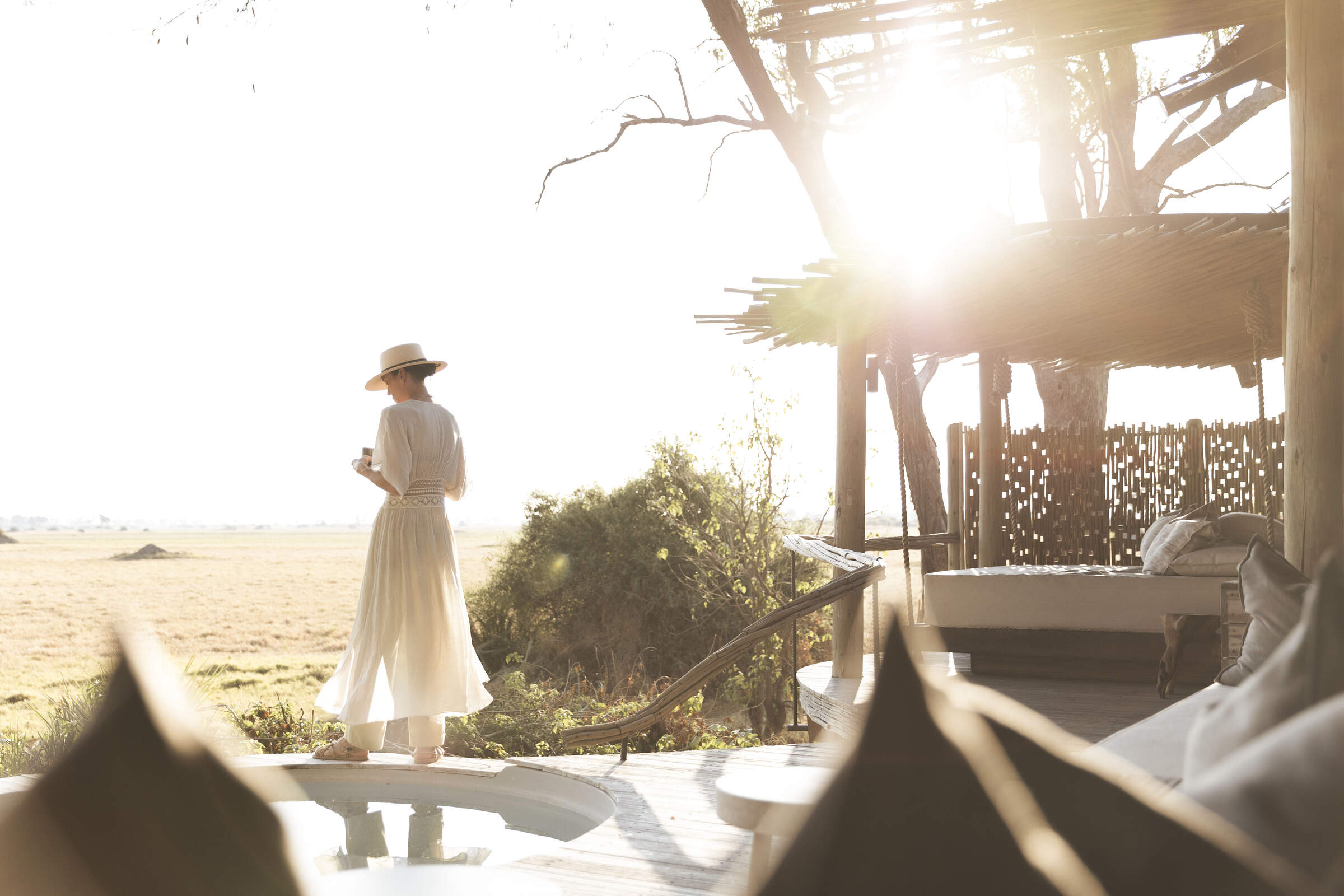
Mombo Camp
Mombo is one of Botswana's most exclusive safari camps, set in a beautiful, remote location within the Moremi Game Reserve and with exceptional game densities.
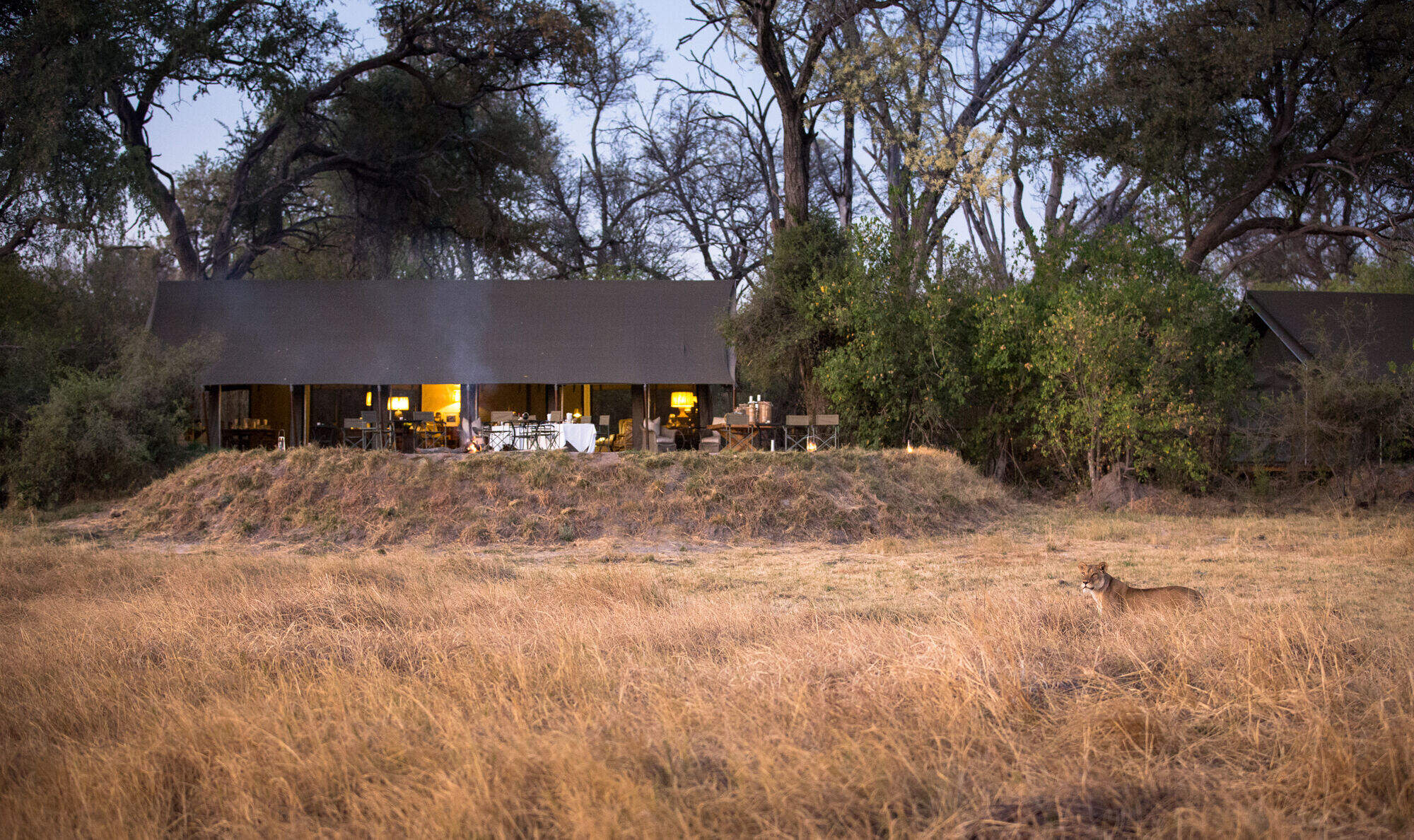
Little Machaba
Overlooking the Khwai River and Moremi Game Reserve beyond, Little Machaba is a classically designed camp with very comfortable tents in a great game-viewing area.
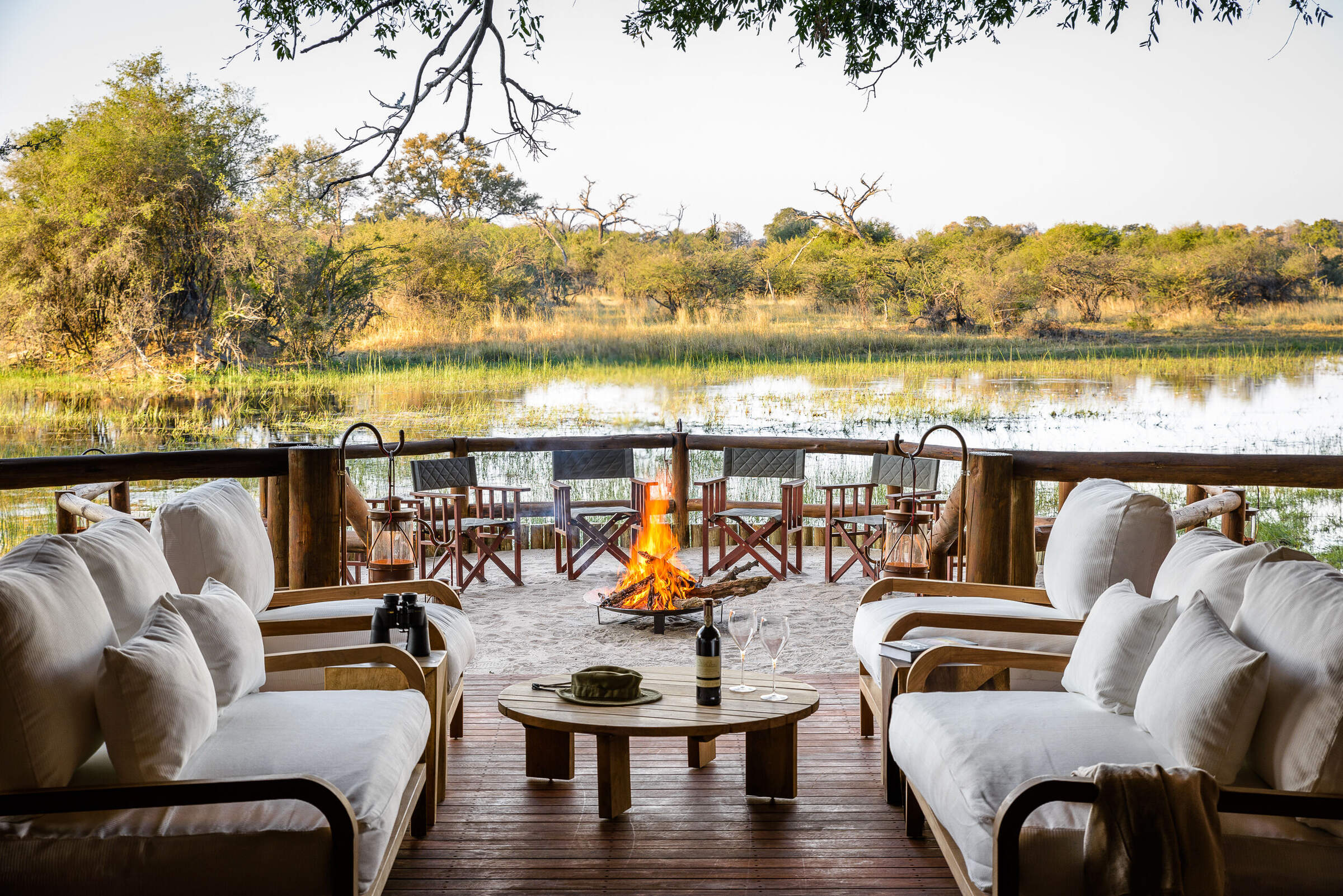
Chief's Camp
Chief's Camp is situated on Chief's Island, within the Okavango Delta's Moremi Game Reserve. Experience one of Botswana's top game-viewing areas by 4WD and mokoro.
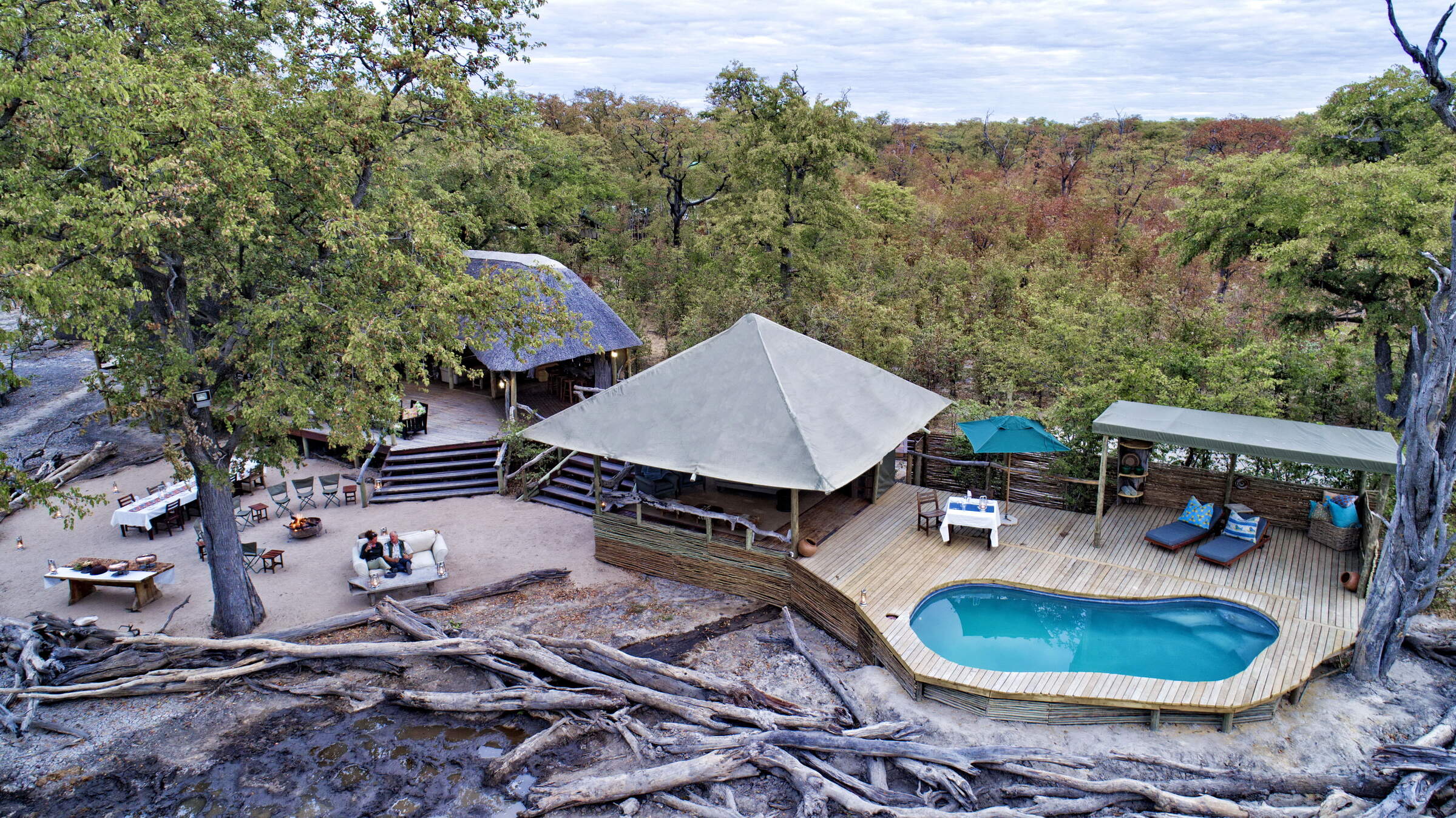
Elephant Pan
Fairly rustic, and relatively inexpensive, Elephant Pan overlooks a natural waterhole that attracts an almost constant parade of animals.
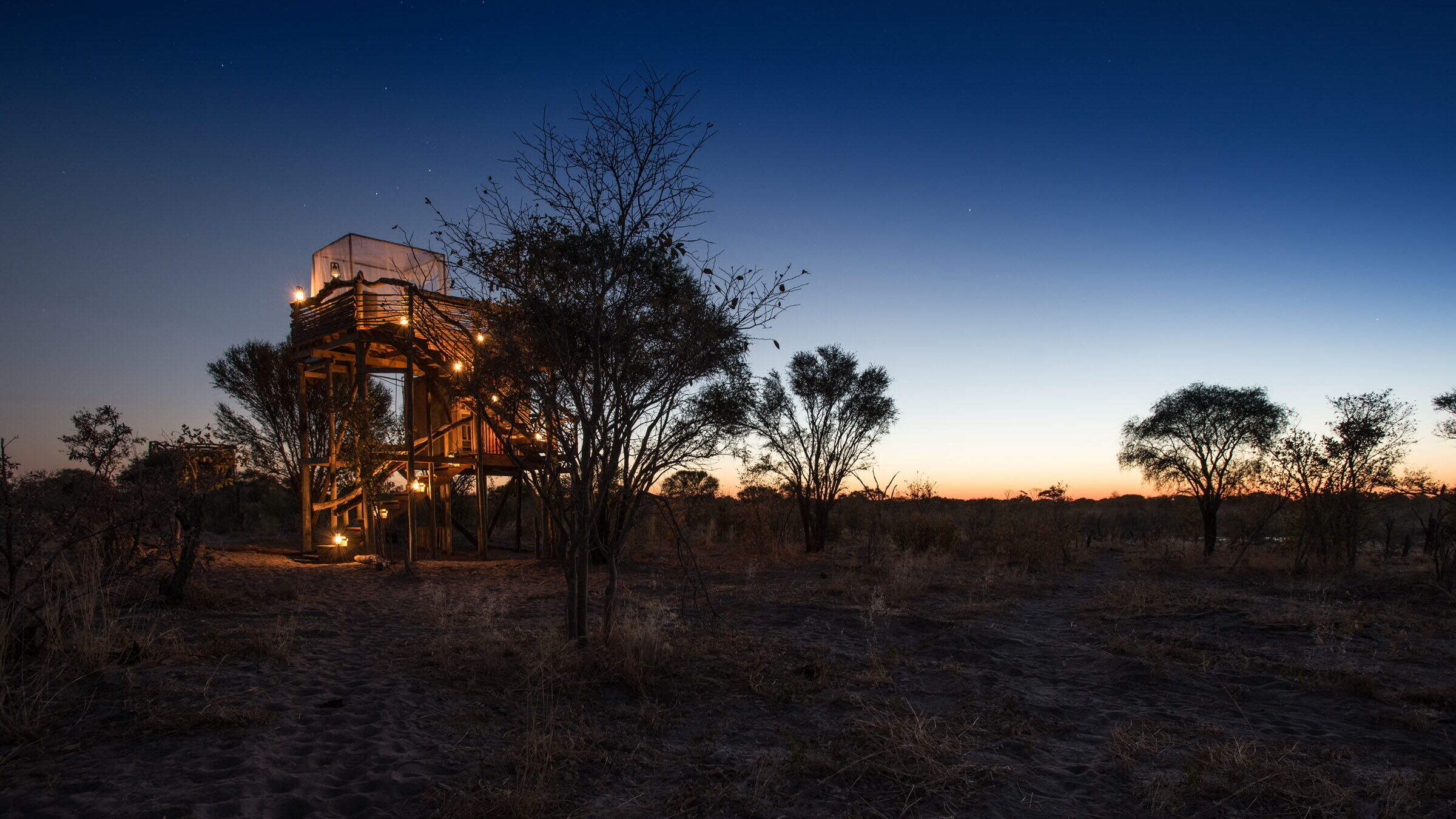
Skybeds
Situated in a private reserve close to Moremi Game Reserve, Skybeds offers a simple yet wonderful opportunity to sleep under the stars and watch wildlife from your bed.
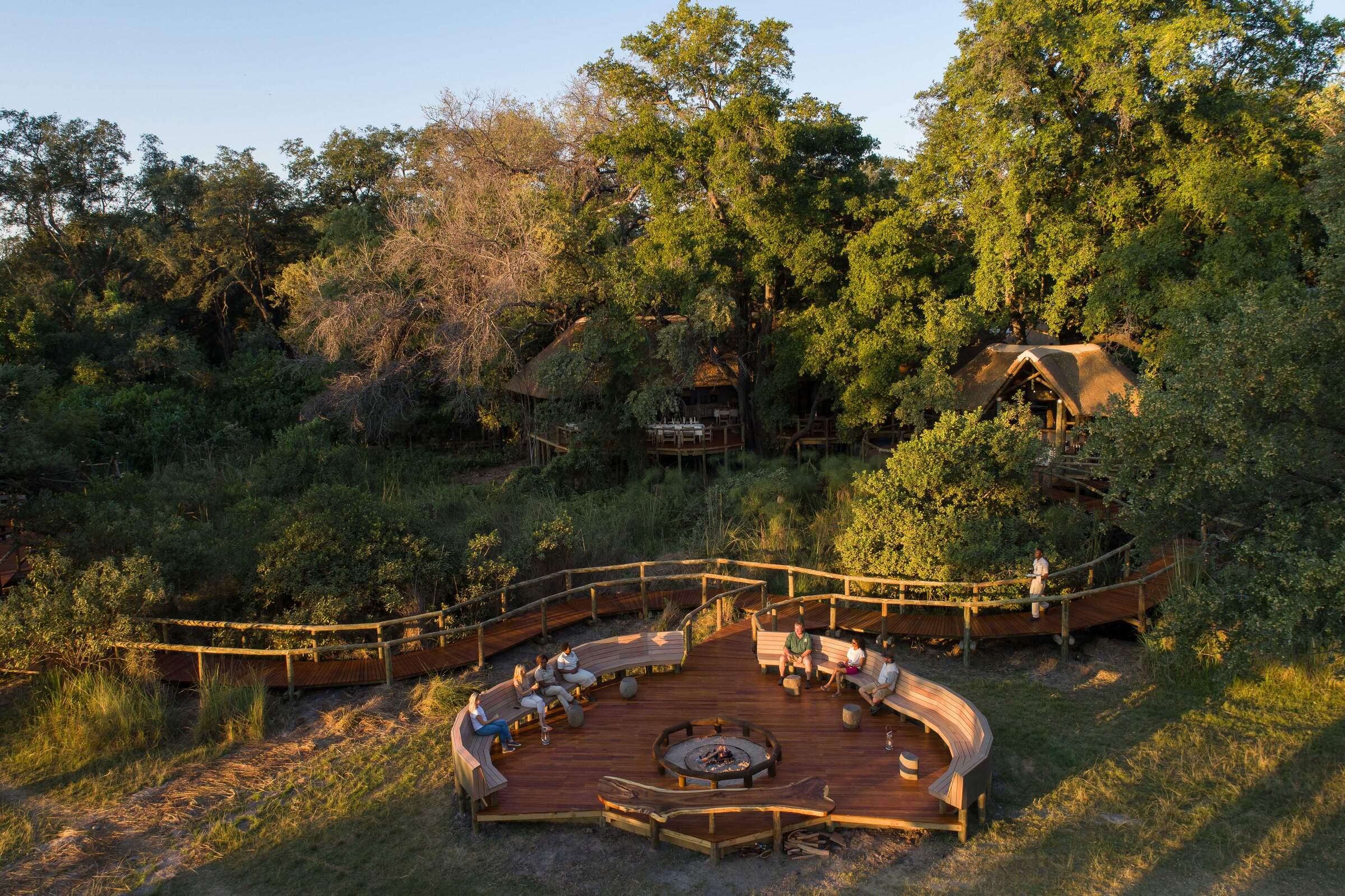
Camp Moremi
In one of the best locations for game viewing in Botswana, Camp Moremi sits at the tip of the Mopane Tongue, overlooking Xakanaxa Lagoon.
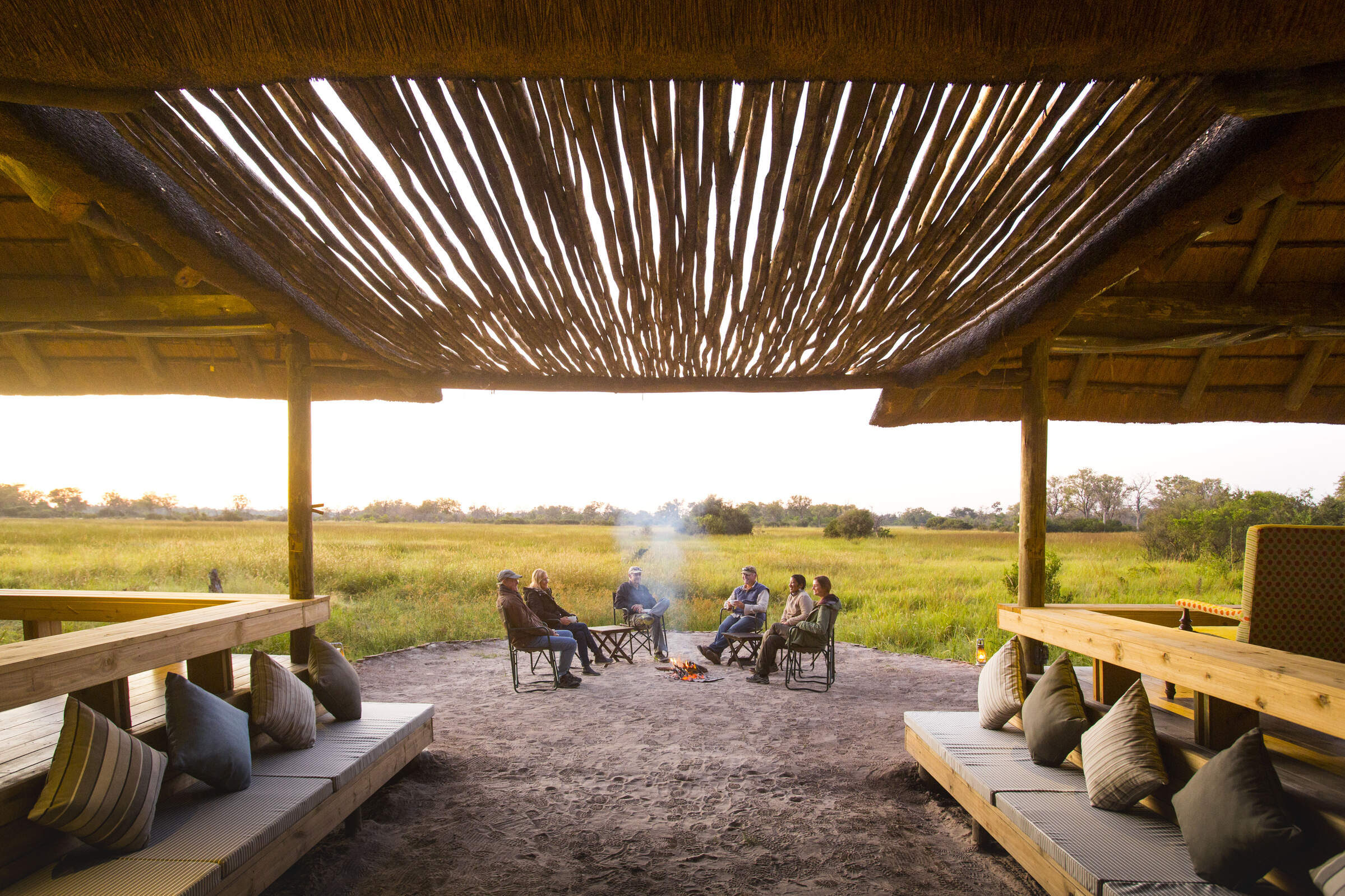
Little Sable
Little Sable camp is located in the Khwai Private Reserve – which borders the Moremi Game Reserve and Chobe
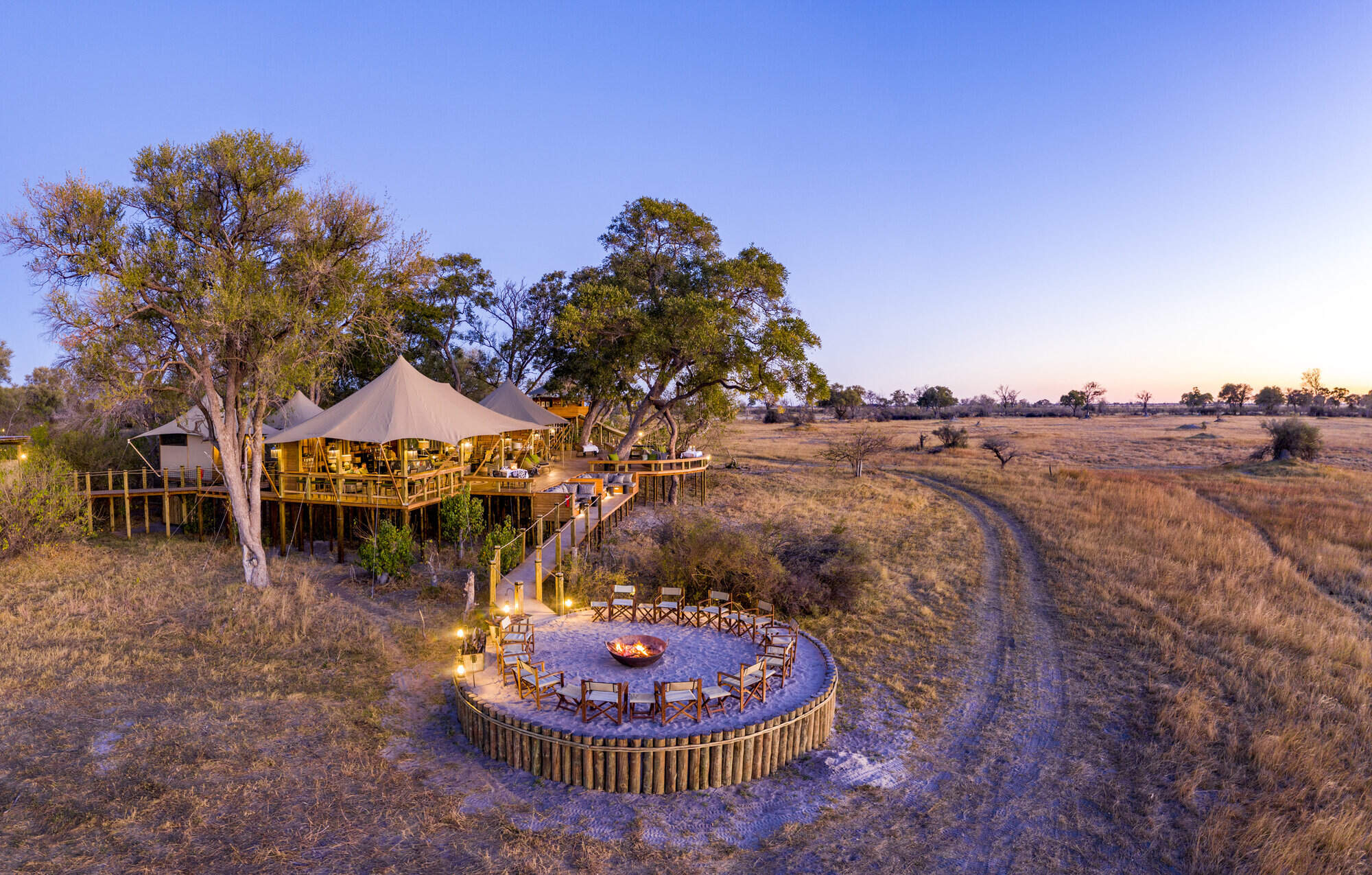
Tuludi
Tuludi is a brand new luxury camp, within the Khwai Private Reserve, built on a site under giant leadwood trees and overlooking the Okavango Delta floodplains.
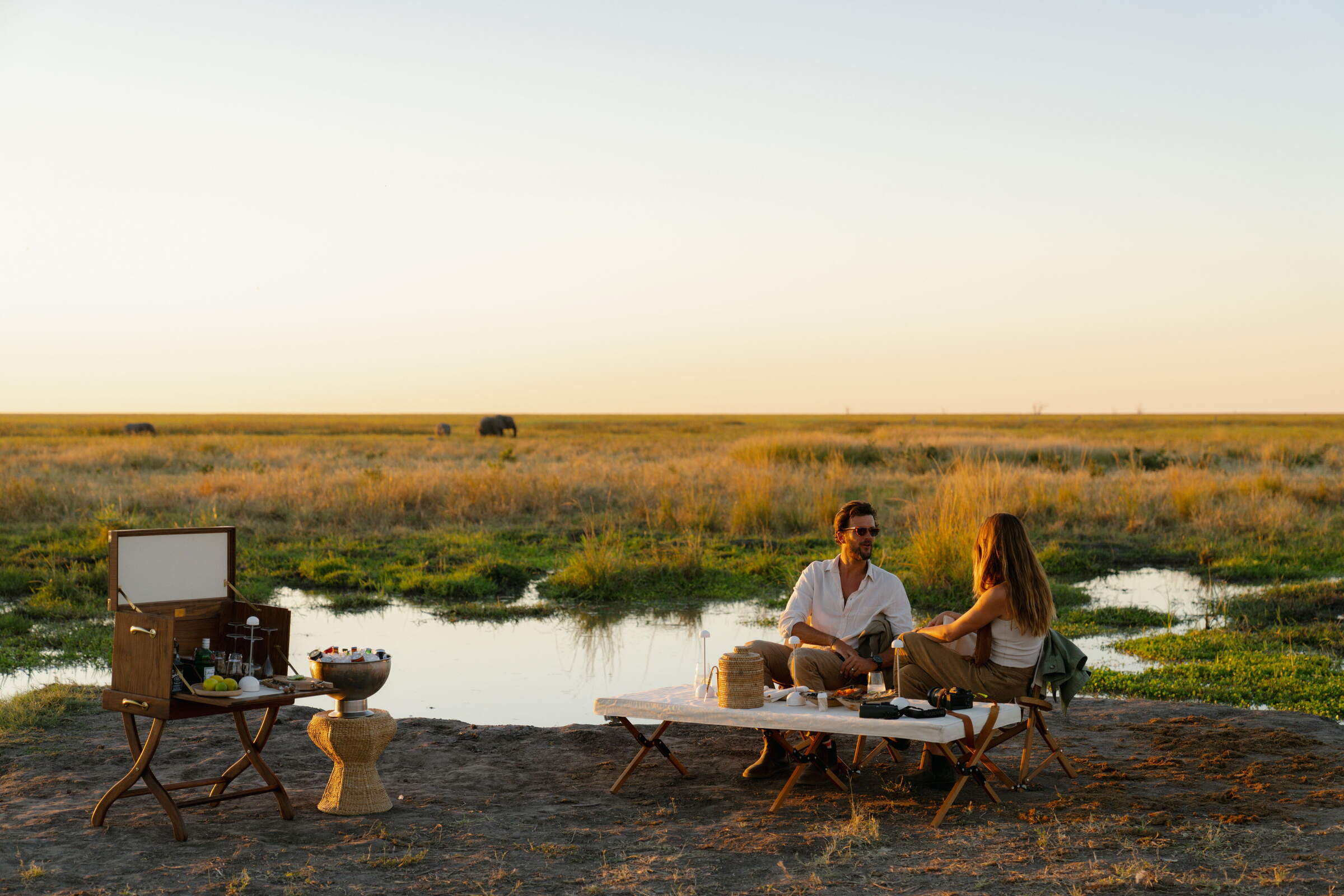
Mokete Camp
New for July 2023, Mokete has 9 luxurious tents, raised on platforms above the surrounding bush and offers an experience of the Kalahari Wilderness.
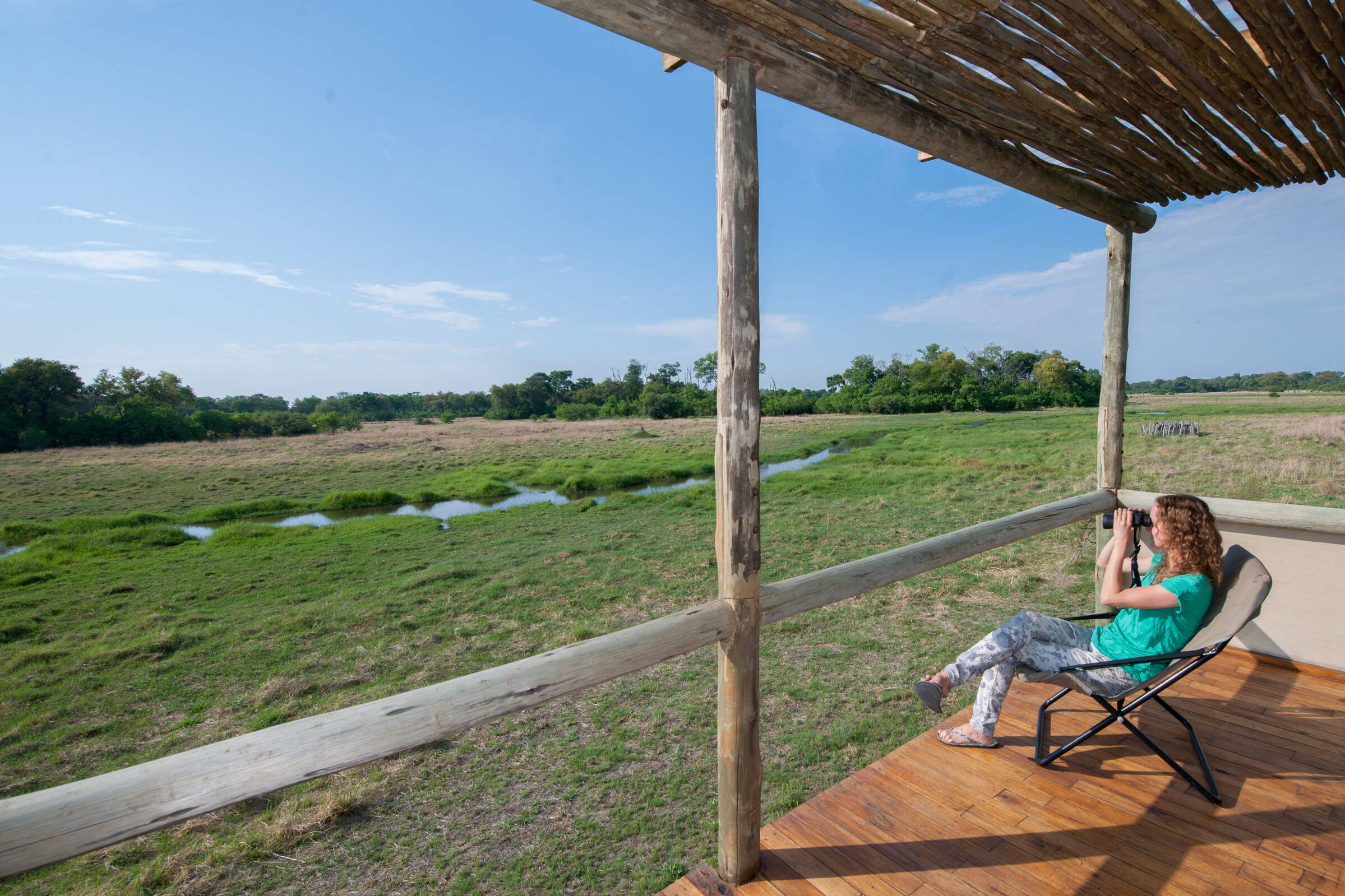
Sango Safari Camp
Sango offers comfortable tented accommodation, without some of the frills often found in Botswana's camps, with an area that's scenic and gets excellent, consistent game sightings.
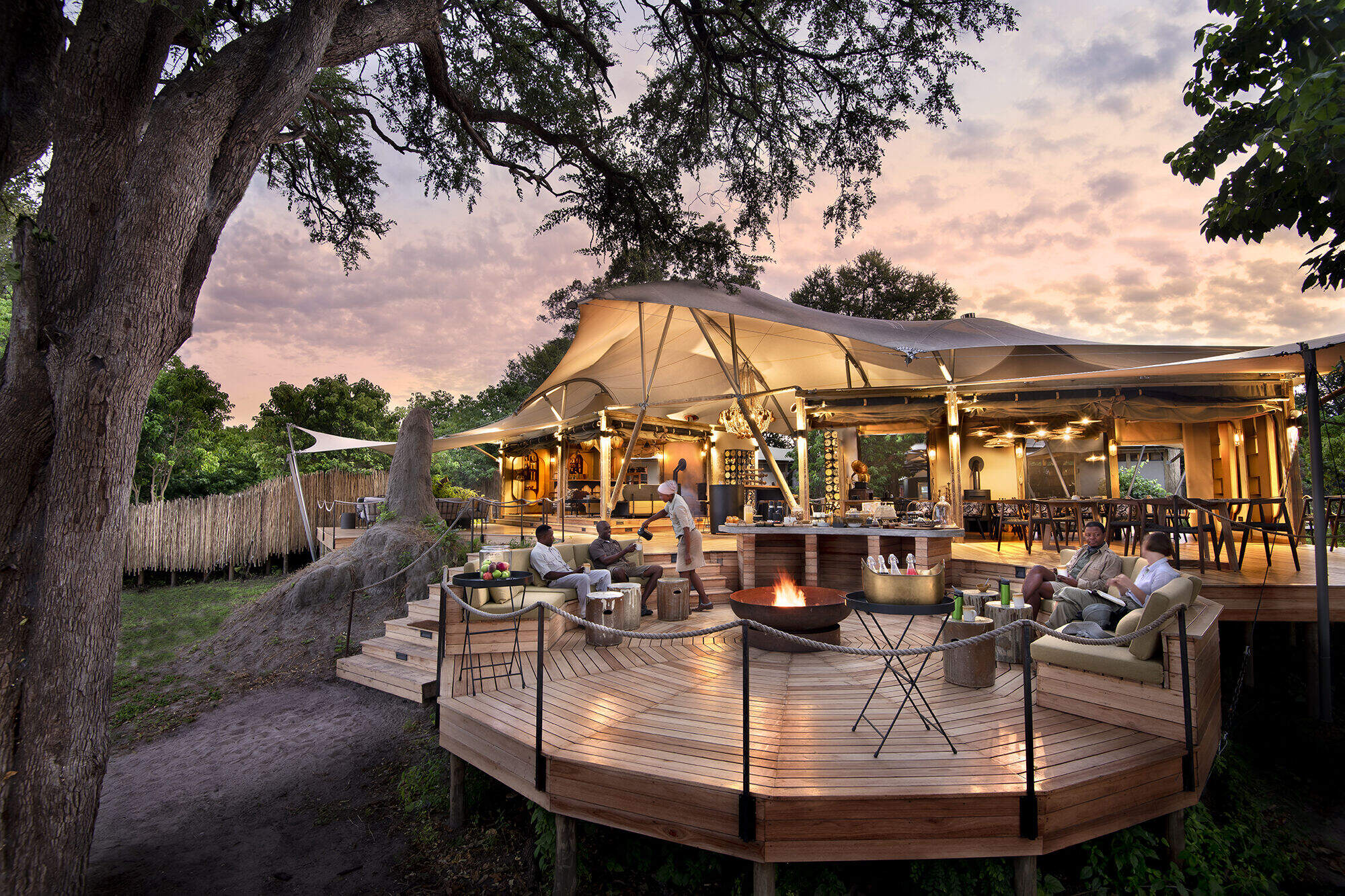
Khwai Leadwood
Khwai Leadwood is a luxurious lodge located in the heart of the Khwai Community Concession, offering guests exceptional service, stunning scenery, and unforgettable wildlife experiences.
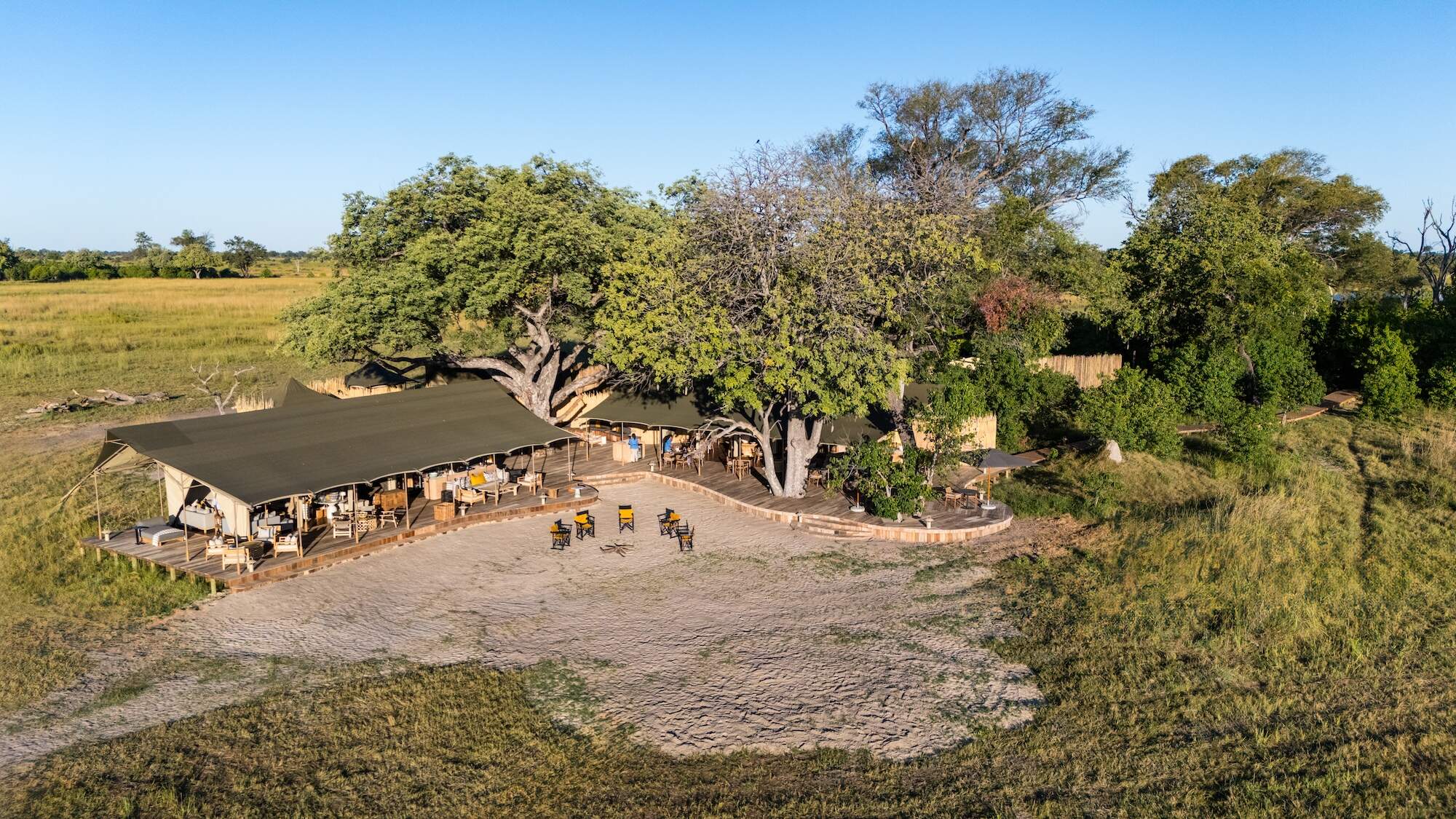
Monachira
Opened in May 2025, Monachira is a stylish lodge in the Okavango Delta with a focus on water-based activities.
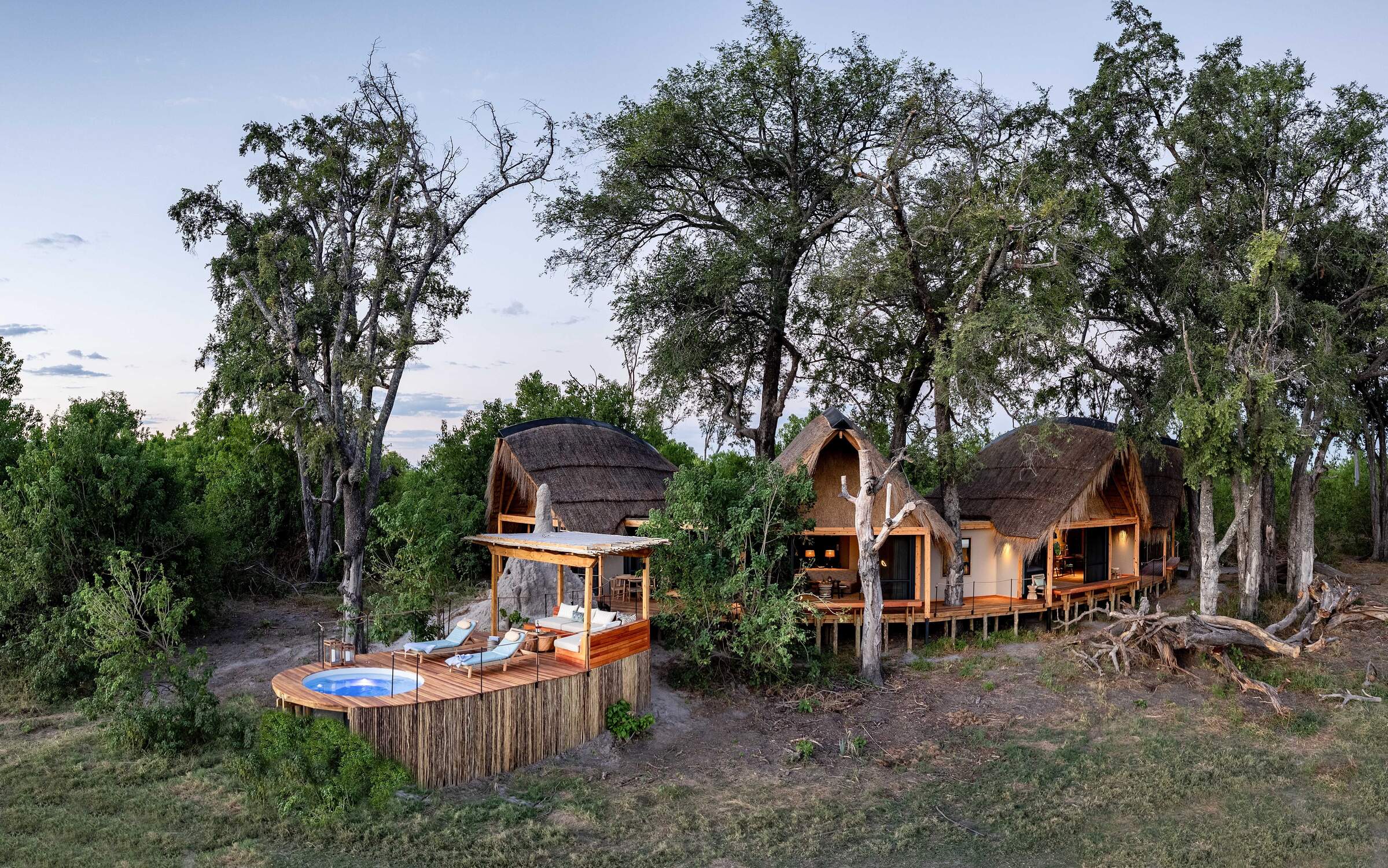
Tawana
An exclusive new lodge on the banks of the Gomoti River, Tawana has just eight very spacious suites.
When to go to Moremi Game Reserve
Our month by month guide: What it's like to visit Little Mombo in Moremi Game Reserve
Jan
Feb
Mar
Apr
May
Jun
Jul
Aug
Sep
Oct
Nov
Dec
Moremi Game Reserve in January
January is the height of the rainy season in Moremi Game Reserve. Evening showers and occasional thunderstorms cool the air, making temperatures more comfortable than the peak heat of October to December. Wildlife disperses across the landscape, but the Khwai River area still offers good sightings of lions and elephants.
January is also an exceptional time for birdwatching, with migratory species abundant and breeding activity in full swing. The lush greenery creates stunning photographic opportunities, while mokoro excursions allow for tranquil exploration of waterways. Despite the rain, Moremi’s diverse ecosystems, including mopane forests and waterways, offer unique wildlife viewing opportunities. Lower visitor numbers mean better rates at camps and lodges.
- Warm with occasional heavy thunderstorms
- Spectacular birdlife throughout the reserve
- Wildlife dispersed in the floodplains and woodlands
- Good availability in camps and lodges
Our view
A good time to visit, with pros & cons
Weather in January
Moremi Game Reserve in February
February in Moremi Game Reserve sees the wet season continue, with heavy evening rains and cooling temperatures. The reserve is green and vibrant, alive with insects, smaller animals, and many animals are raising their young. The Xakanaxa Lagoon area is particularly rich in wildlife diversity at this time.
While thicker vegetation makes spotting larger animals more challenging, patient observers may encounter leopards or antelope species. Birdwatching remains a highlight, with over 500 species, including many in colourful breeding plumage. High water levels make boat trips a wonderful way to explore the intricate waterways of the Delta. Visitor numbers are low, offering a more intimate safari experience and better availability at luxury camps.
- Warm temperatures with some thunderstorms
- Abundant birdlife, including breeding species
- Wildlife raising young across the reserve
- Game viewing improving in central areas
- Low visitor numbers and good camp availability
Our view
This is not a great time to visit
Weather in February
Moremi Game Reserve in March
March marks the end of the rainy season, with fewer storms and more sunny days. The landscape remains lush, and wildlife activity increases as animals finish raising their young. This is an ideal time for photography, with the green scenery providing dramatic backdrops.
While thick vegetation can still make wildlife spotting challenging, patient observers may be rewarded with sightings of predators like lions and leopards, especially in the Khwai River area. Birdwatching continues to be exceptional, with many migratory species still present. Water-based activities like boat cruises offer unique perspectives on the delta's wildlife. With fewer visitors, March provides a quieter, more exclusive safari experience in Moremi’s mopane forests to expansive floodplains.
- Variable weather, rains easing off with occasional thunderstorms
- Many animals finishing raising their young
- Excellent birdwatching and photography opportunities
- Few visitors and lower rates in camps
Our view
A good time to visit, with pros & cons
Weather in March
Moremi Game Reserve in April
April in Moremi Game Reserve typically signals the end of the rainy season, with clearer skies and a vibrant green landscape. Night temperatures begin to drop, particularly in the southern areas of the reserve. Game viewing improves as vegetation starts to thin, making it easier to spot wildlife. This is also an excellent time for boat excursions, offering intimate encounters with aquatic wildlife and bird species.
Birdwatching remains highly rewarding, with many species still nesting or breeding. The Xakanaxa Lagoon area is especially rich in wildlife diversity during this period. With the shoulder season underway, visitors can enjoy better value at top camps. April strikes a wonderful balance of pleasant weather, diverse wildlife sightings, and fewer tourists.
- Cooler evenings with occasional showers
- Lush green landscapes after the rains
- Improved predator-prey interactions
- Quiet period with relatively low rates
- Water levels rising - ideal for boat safaris
Our view
A good time to visit, with pros & cons
Weather in April
Moremi Game Reserve in May
May is one of the best months to visit Moremi Game Reserve. The annual floodwaters from Angola start to reach the Delta, creating ideal conditions for water-based safaris. Cooler mornings and evenings heighten predator activity, although tall grasses in some areas may still obstruct views.
The Khwai River and Chief’s Island are prime locations for spotting large herds of elephants and buffalo. Birdwatching remains excellent, with over 500 species recorded in the reserve. May is perfect for combining game drives and boat excursions, offering a diverse and rewarding safari experience. Clear, crisp evenings also provide outstanding stargazing opportunities. As shoulder season ends, value-conscious travellers should book early to secure availability at camps and lodges before peak rates apply.
- Cool mornings and evenings with little rain
- Game viewing improves as grasses thin
- Increased predator activity in the reserve
- Final month of shoulder season - rates still reasonable
- Availability becomes limited as demand rises
Our view
A very good time to visit
Weather in May
Moremi Game Reserve in June
June marks the start of the dry season in Moremi Game Reserve. Mornings and evenings are cool, sometimes reaching freezing at night, while daytime temperatures rise to 25-30°C/77-86°F with clear skies. The air clarity is excellent for photography. As surface water diminishes, wildlife starts to congregate around remaining water sources.
Game viewing improves significantly throughout Moremi, but especially in the Khwai River area and around Xakanaxa Lagoon. June is perfect for night drives, which are possible in areas outside the reserve. Birdwatching remains excellent, with many water birds concentrated around permanent water bodies. With peak season approaching, many camps and lodges are becoming much busier and so booking well in advance is wise.
- Warm days, cold nights in Moremi
- Excellent conditions for wildlife photography
- Animals congregating around water sources
- Vegetation thinning, improving visibility
- Peak season starts, rates increase
Our view
Fantastic: the very best time to visit
Weather in June
Moremi Game Reserve in July
July in Moremi Game Reserve offers cool mornings and evenings, combined with excellent game viewing. The thinning vegetation and concentration of wildlife around water sources make this one of the best months for safari experiences. The Khwai River area and Chief's Island are particularly rewarding, with high chances of spotting big cats and large herds of elephants and buffalo.
Water-based activities like motorboat cruises on the permanent waterways provide unique wildlife viewing perspectives. Birdwatching remains excellent, with large concentrations of water birds. July is ideal for photography, with clear skies and animals gathering at waterholes. Night drives offer opportunities to spot nocturnal species.
- Comfortable days, cold nights in the reserve
- Excellent game viewing as vegetation recedes
- Khwai area becomes busy with visitors
- Private concessions offer exclusive experiences
- Peak season with high rates in most camps
Our view
Fantastic: the very best time to visit
Weather in July
Moremi Game Reserve in August
August is a popular time to visit Moremi Game Reserve, coinciding with peak safari season. Temperatures are generally cold at night and comfortable during the day, rising towards month-end. Wildlife congregates around remaining water sources, making game viewing exceptional.
The Khwai River area offers excellent predator sightings, though can be very busy with travellers. August is one of the best times to experience the delta floods at their peak, ideal for boating safaris. Birdwatching is rewarding, with large concentrations of water birds. The clear, dry conditions create spectacular sunsets and stargazing opportunities.
- Dry, warm days and cool nights in Moremi
- Fantastic wildlife watching, especially in the Delta
- Okavango flood waters typically at their peak
- Stargazing opportunities on clear nights
- High rates and limited availability in camps
Our view
Fantastic: the very best time to visit
Weather in August
Moremi Game Reserve in September
September in Moremi Game Reserve sees warming daytime temperatures while nights remain cool. The dry conditions create a hazy atmosphere, resulting in stunning sunsets. Game viewing is excellent, with large numbers of elephants and buffalo congregating in the Khwai River area and around Xakanaxa Lagoon. Predator sightings are frequent, especially around water sources.
September is ideal for walking safaris and night drives, offering unique wildlife encounters outside the borders of the reserve. Birdwatching remains rewarding, with migrant birds beginning to return. Water-based activities provide close encounters with aquatic wildlife whilst the clear night skies offer excellent stargazing opportunities.
- Warmer days, cool nights in the reserve
- Prime month for wildlife viewing in Moremi
- Large elephant herds visible near water
- Hazy conditions create dramatic sunsets
- Peak season rates, many lodges fully booked
Our view
Fantastic: the very best time to visit
Weather in September
Moremi Game Reserve in October
October is one of the hottest and driest months in Moremi Game Reserve. The lack of water and vegetation results in excellent big-game viewing, particularly around the remaining water sources. Water levels are lower, limiting some water-based activities, but concentrating wildlife for easier viewing.
October is excellent for walking safaris and night drives, both possible outside the park, which provide unique perspectives on the Okavango’s ecosystems. Birdwatching remains rewarding, with many migrant species arriving. The dry, hazy conditions create dramatic landscapes and stunning sunsets, ideal for photography. The most luxury provide comfortable and cool bases for exploring the reserve during this intense wildlife period.
- Hot days, chance of rain late in the month
- Excellent big game viewing opportunities
- Water activities limited as flood waters recede
- Last month of peak season in Moremi camps
- Migratory birds begin to arrive in the reserve
Our view
Fantastic: the very best time to visit
Weather in October
Moremi Game Reserve in November
November usually marks the end of the dry season in Moremi Game Reserve, with increasing temperatures and humidity often culminating in the first rains. These short, heavy showers bring a flush of green to the landscapes. Wildlife begins to disperse as water becomes more available, but game viewing still remains very good.
November is fantastic for birdwatching, with the arrival of many migrant species. The first rains create spectacular skyscapes and rainbows, offering unique photographic opportunities. Water levels start to rise, gradually improving conditions for mokoro excursions. The prices at luxury camps reduce to shoulder-season levels, offering bargains for value-conscious travellers wanting to balance of wildlife viewing and comfort.
- Hot days, sometimes humid in Moremi
- Increasing likelihood of rain as month progresses
- Wildlife less concentrated but still good viewing
- Arrival of migratory birds enhances birdwatching
- Shoulder season begins, rates become lower
Our view
A good time to visit, with pros & cons
Weather in November
Moremi Game Reserve in December
December in Moremi Game Reserve sees the continuation of the rainy season, bringing some relief to the high temperatures. While game viewing becomes more challenging as wildlife disperses, great sightings can still be had in key areas. The landscape transforms with lush vegetation, creating beautiful scenery. December is excellent for birdwatching, with migratory birds in full attendance and many species breeding.
The rejuvenated waterways enhance boat safari experiences, offering unique perspectives on the Delta's ecosystem. Afternoon thunderstorms create dramatic skies, perfect for landscape photography. Luxury camps offer lower season rates, providing excellent value for experiencing Moremi's diverse wildlife and stunning landscapes during this vibrant time of year.
- Temperatures cooling from October-November highs
- High chance of rain, usually short heavy storms
- Birds in breeding plumage and often including migrants
- Wildlife more dispersed
- Low-season rates available in most camps
Our view
A good time to visit, with pros & cons
Weather in December

Looking for inspiration on where to travel next?
Visit our trip chooser to explore your options and find inspiration for your perfect African adventure
Inspire me